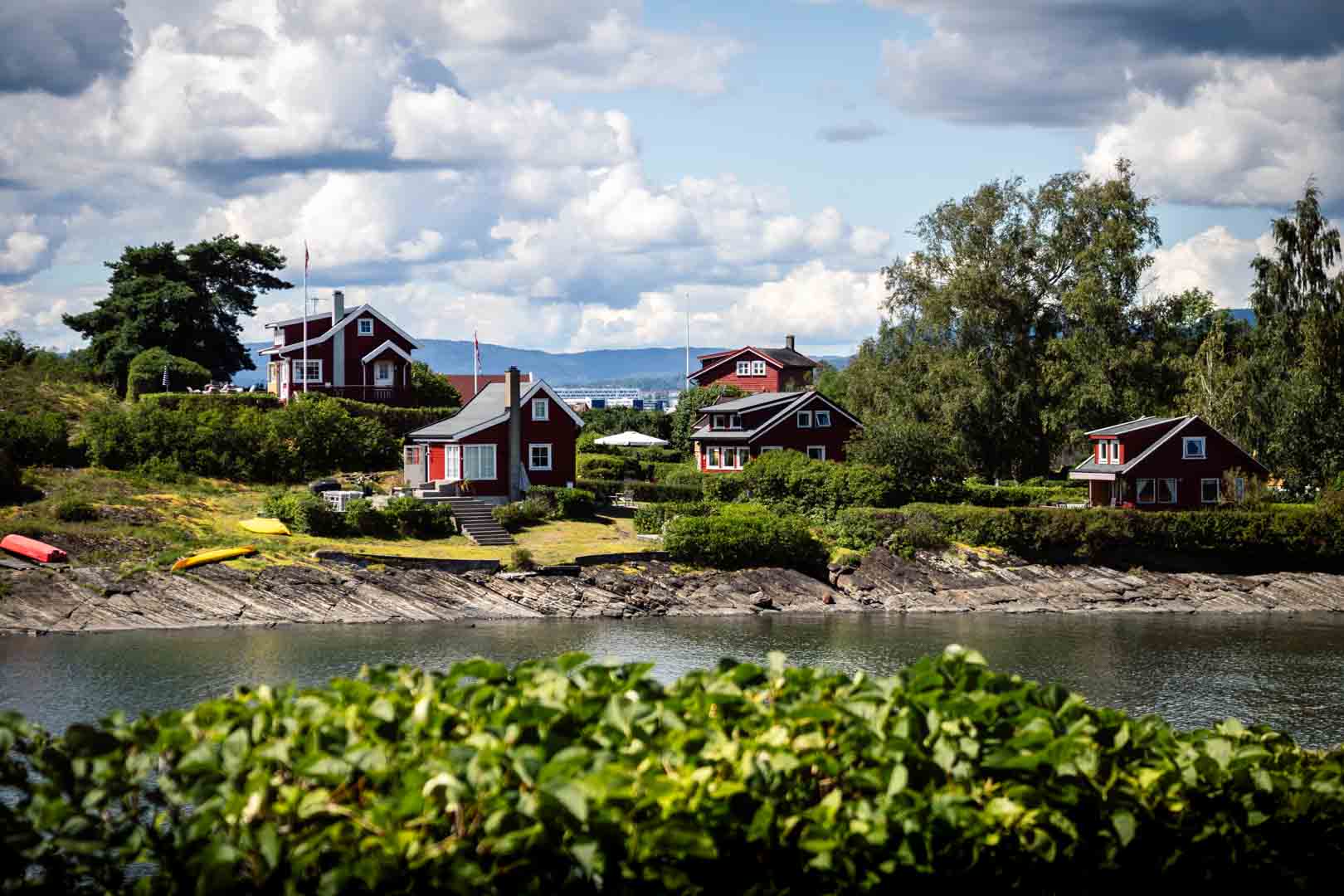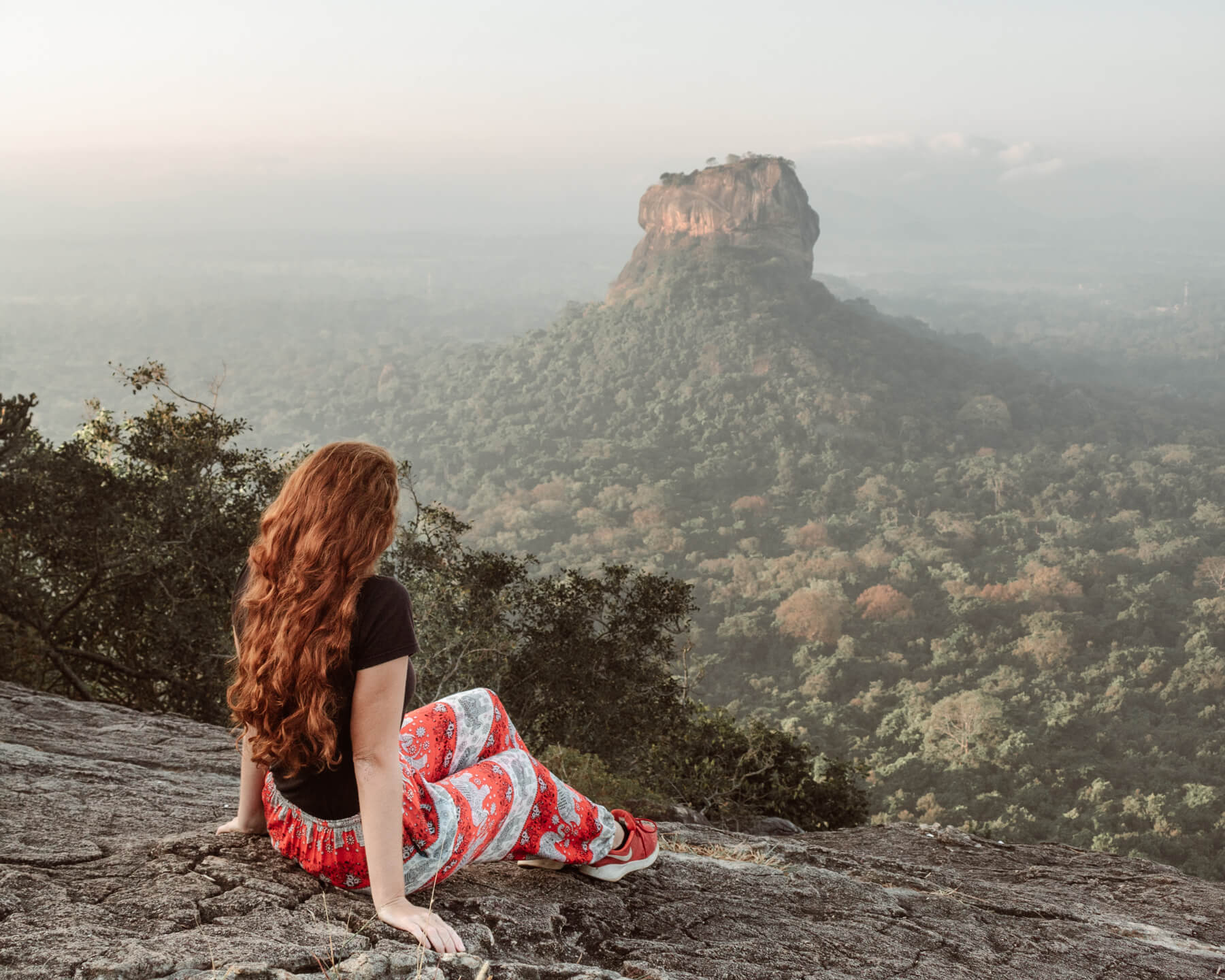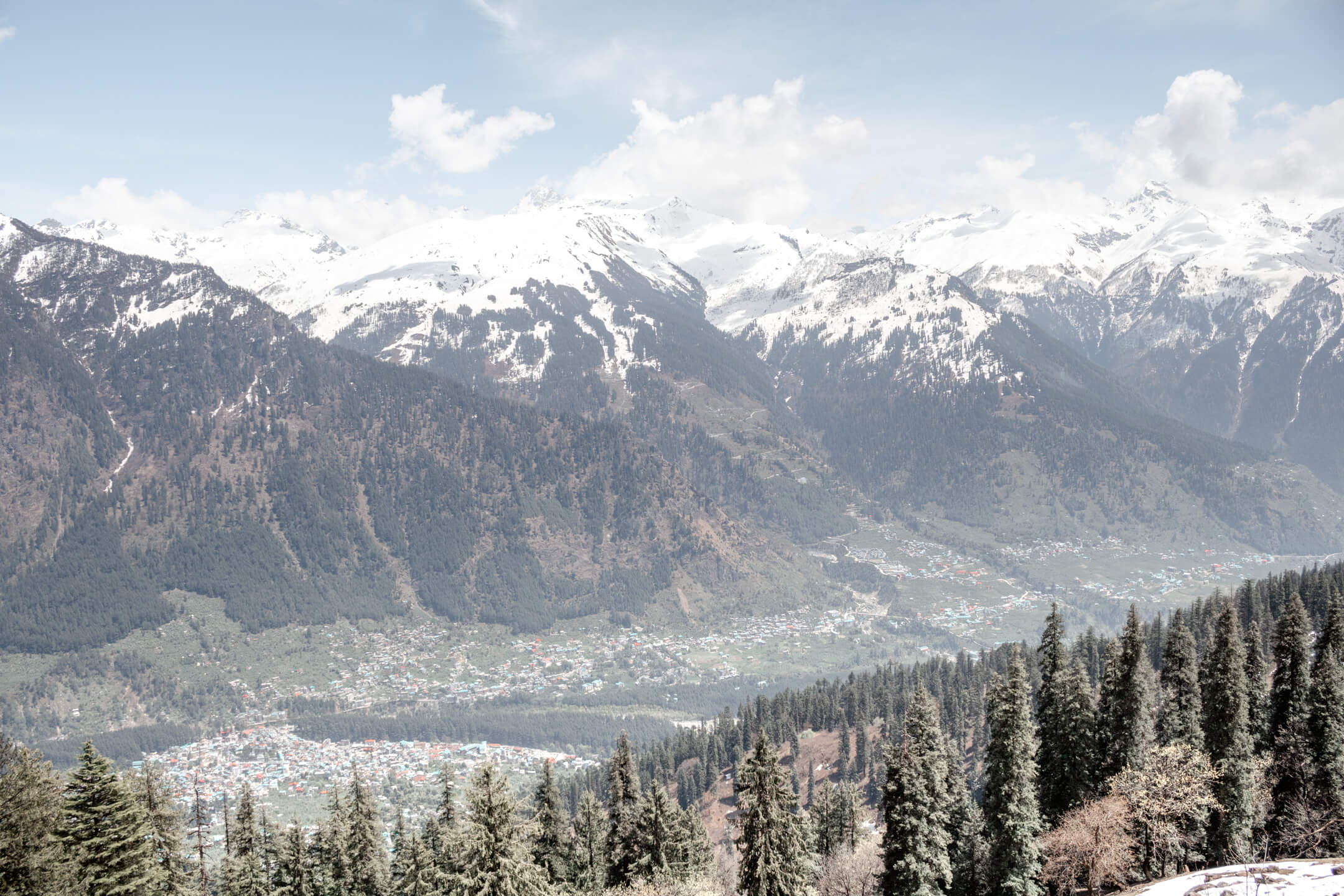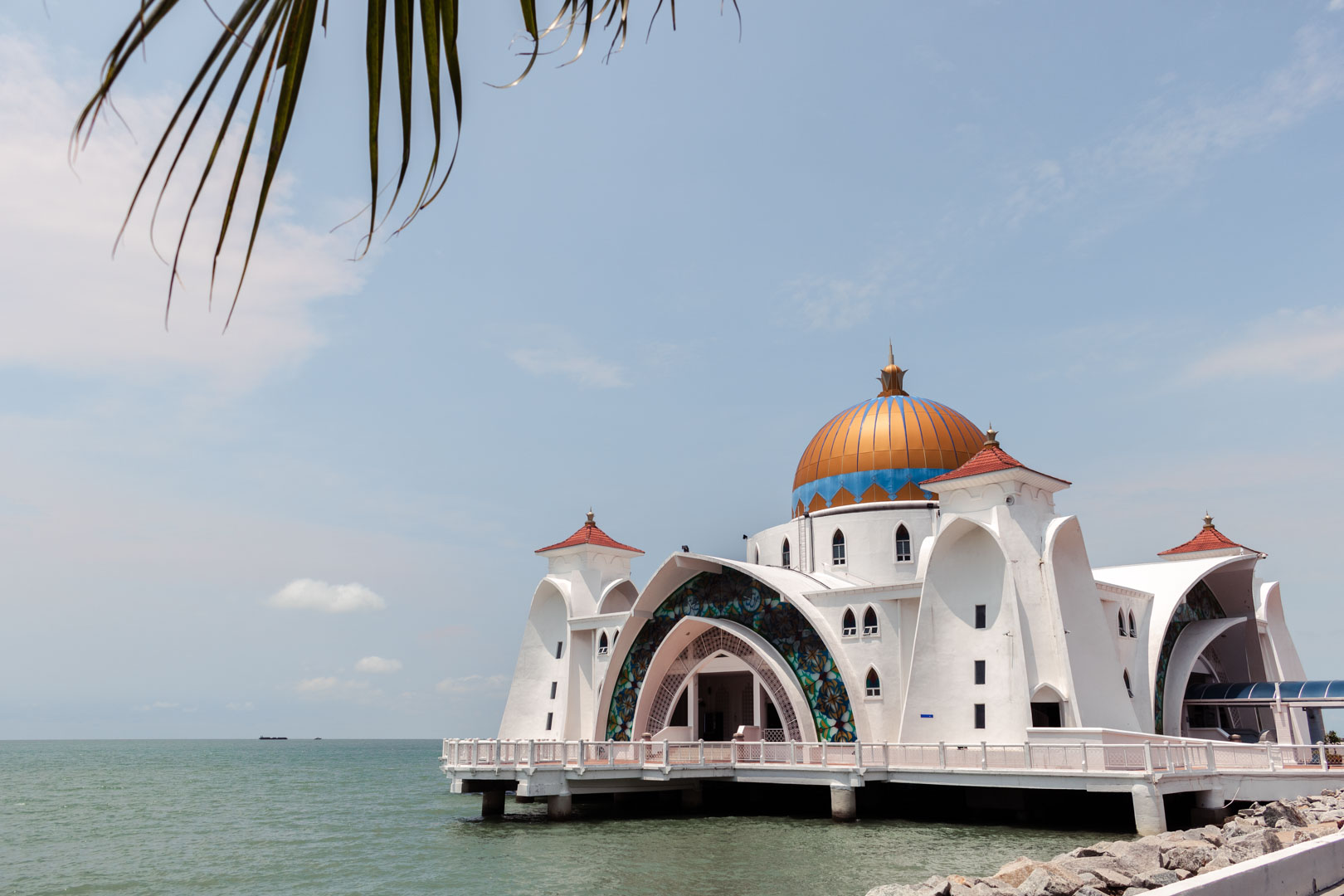The Best 2-Week Peru Itinerary: How To Spend 2 Weeks In Peru!
Last Updated: August 31 2024
Peru is one of the most magical countries in South America, home to lush rainforests, striking mountains, and ancient Inca ruins, of which Machu Picchu is of course the most famous!
We spent two weeks exploring Peru and can safely say it’s now one of our favourite countries. This country has something for everyone, whether you’re looking to hike, wildlife-watch or indulge in the local cuisine.
To help you plan the perfect trip, we’ve put together the ultimate 2-week Peru Itinerary (which we followed). You’ll visit the iconic Machu Picchu, explore the Amazon Rainforest, and explore some of the country’s most popular cities (including Cusco and Lima).
In this guide, we’ll cover the best places to visit for your 2 weeks in Peru. We’ll also go through other helpful information such as how to get around, and where to stay in each destination. So let’s get started!
Some posts on this site contain affiliate links. If you buy or book something through these links, we earn a small commission, but at no extra cost to you! If you want to learn more, you can take a look at our privacy policy!
The Ultimate 2-Week Peru Itinerary
There are so many amazing things to do in Peru. Even if you spent two months in the country, you’d never get to see everything Peru has to offer.
Luckily, this itinerary will bring together the best destinations. We’ll be starting in the capital city of Lima, and then making our way through other popular destinations including Paracas and Huacachina.
Let’s dive into the ultimate Peru 2-week itinerary!
Days 1-2: Lima
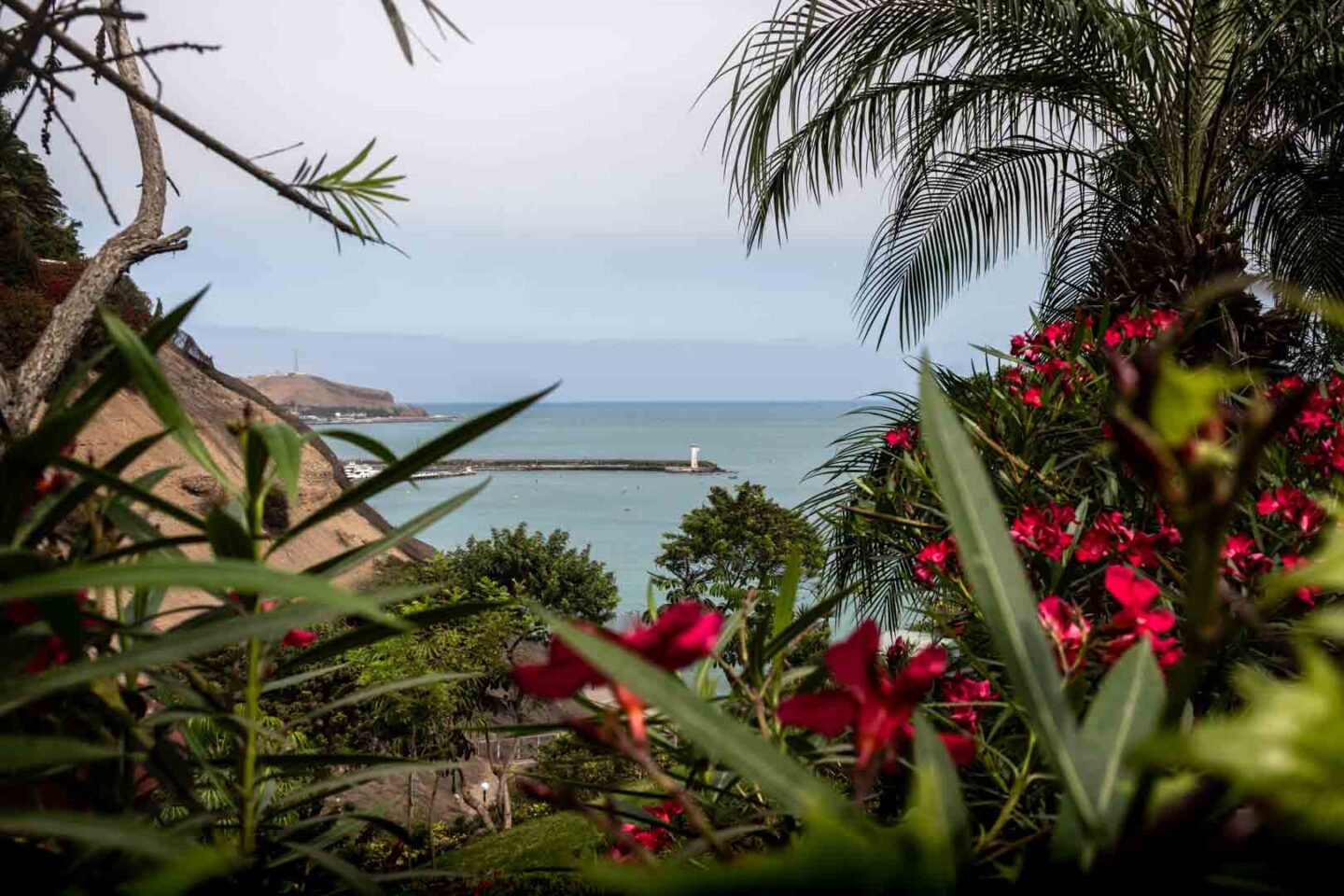
Peru’s capital city tends to be the first stop for travellers as you’ll likely fly into Jorge Chavez International Airport. Although some people fly straight to Cusco, Lima has a lot to offer, so you’ll want to spend at least one or two days here.
Located along Peru’s Pacific Coast, Lima is one of the largest cities in South America. Although it can feel chaotic at first, this city offers a great introduction to the country.
Known for its culinary experiences, surfing beaches, and colonial architecture, Lima has so much to offer. You’ll find a wide variety of attractions here too. Just be aware that Lima is a large city, so you won’t be able to see everything in a couple of days.
Things to Do in Lima
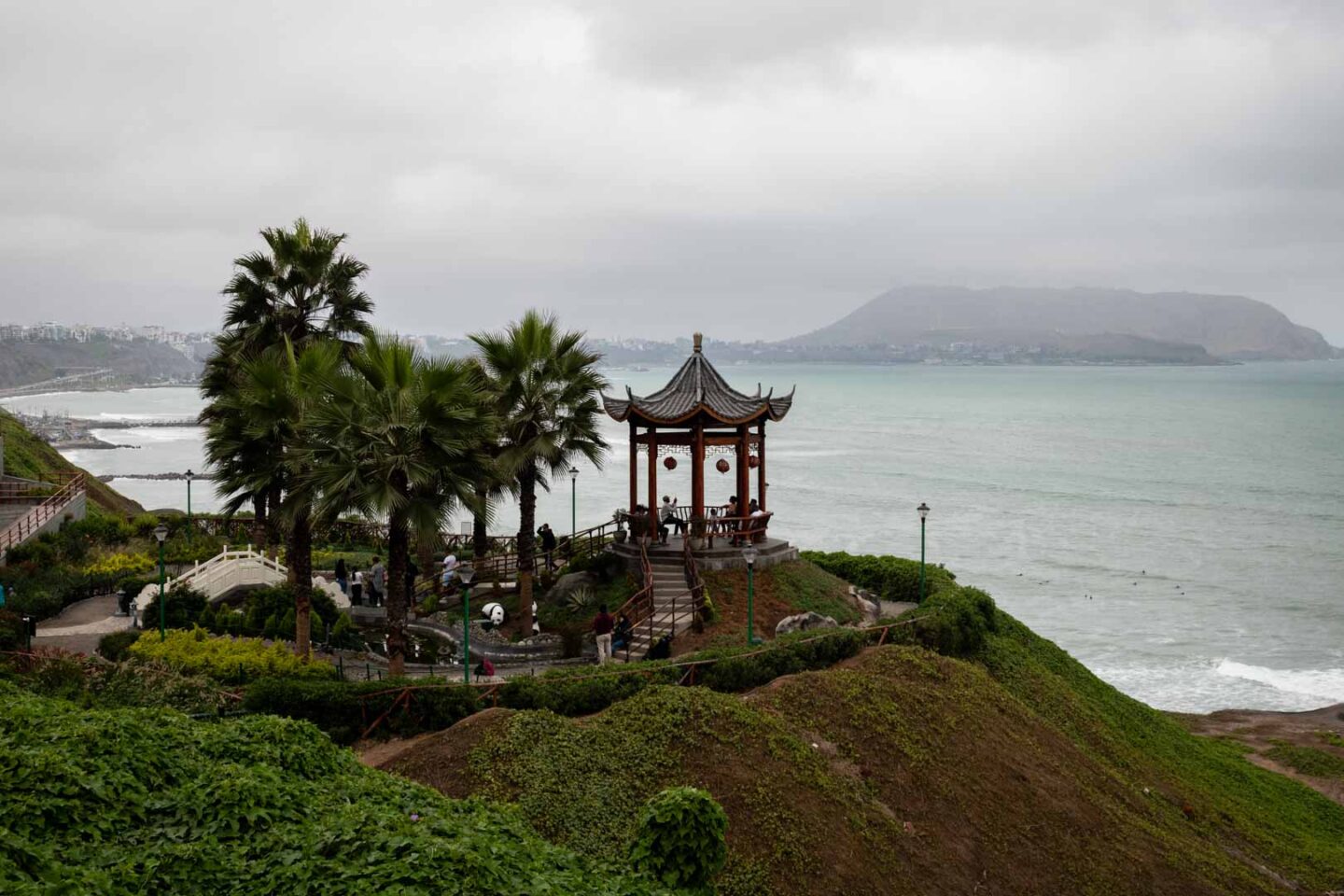
Lima’s Main Square is a highlight of any 2 week Peru itinerary. Founded in 1535, you’ll find this square in the city’s historic centre.
This Unesco World Heritage Site is home to plenty of attractions including the Government Palace, Municipal Palace, and Archbishop’s Palace. You could easily spend a couple of hours here. Better yet, you can explore the square with a local guide.
Here are some other things to do in Lima:
- The Basílica and Convent of San Francisco – This colonial city tour includes a visit to the catacombs within the convent, as well as Plaza de Armas and San Martin Square.
- Explore Huaca Pucllana
- Enjoy the Magic Water Circuit – This awesome 4-hour tour includes a visit to the city’s iconic water fountain show. You’ll also see some of Lima’s most historic buildings.
- Wander around the Barranco Neighbourhood
- Head out on a food tour – This epic Peruvian food tour will take you to some of Lima’s best foodie spots. You’ll learn how to make Pisco Sours and ceviche so what’s not to like?
Where to Stay in Lima
Budget: El Refugio De Barranco
If you’re after an affordable stay then we’d recommend El Refugio de Barranco as this is where we stayed. Situated in the popular Barranco neighbourhood, you’ll be in a great location for exploring the city.
This two-bedroom apartment sleeps up to four people and features a large bathroom, dining table, one double bed, and two single beds. The family who owns this place are lovely too!
Mid-range: Best Western Plus Urban Larco Hotel
For something a bit more pricey, check out this place. Located in the Miraflores neighbourhood, Best Western Plus Urban Larco Hotel offers spacious suites that feature plenty of amenities.
There’s an on-site restaurant and you’ll have breakfast included with your stay. You’ll also benefit from room service and there’s a 24-hour front desk, with staff who are always happy to help.
Luxury: Villa Barranco By Ananay Hotels
Villa Barranco By Ananay Hotels is one of the most luxurious options in Lima. It’s found in the Barranco neighbourhood and overlooks the Peruvian coast so you’ll be treated to breathtaking sea views.
As well as gorgeous rooms (check out the King Suite), this hotel offers a stunning terrace area, concierge services, a garden, and free WiFi. Free bicycles are also available for exploring Peru’s capital.
How to Get Around Lima

Lima is a huge city, so you’ll need to use public transport or taxis to get around. Firstly, the city has a metro line. Although there is only one line, it does service some of the most popular areas.
Luckily, the bus services are much more widespread although these can be very crowded (especially during rush hour). However, they are very affordable and are great for budget travellers.
If you’d prefer to catch a taxi, then we’d suggest using Uber. We used it several times during our stay and found the app to be very reliable! Just keep in mind that traffic in Lima can be bad.
Day 3: Paracas
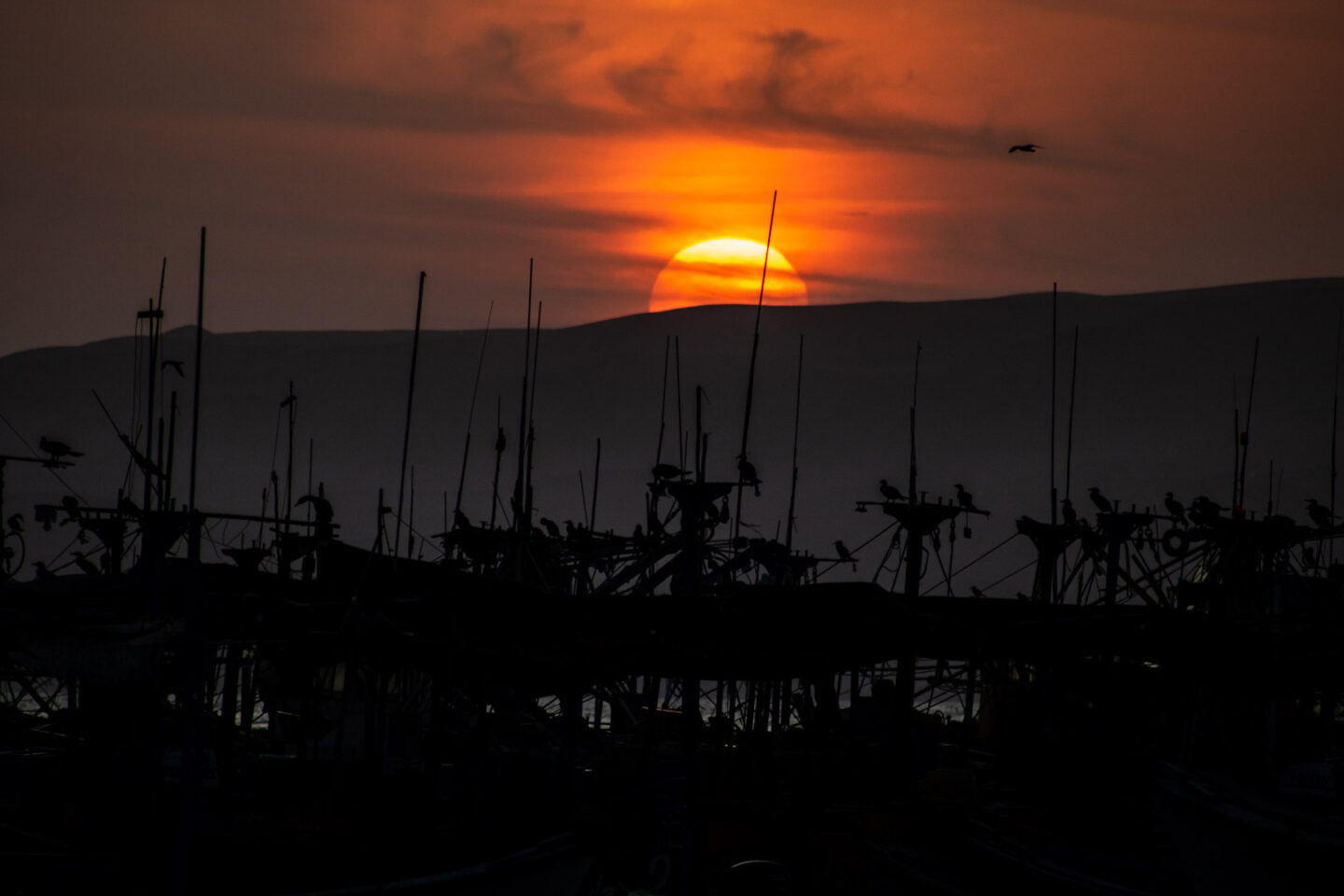
To make the most of your 2 week Peru itinerary, we’d recommend heading to Paracas next. You can easily reach this seaside town on a bus from Lima’s capital, which takes between 3-4 hours depending on traffic.
Paracas is a must-visit for any nature lovers as this area is home to some of the best bird life in South America. Not only that, but it offers a relaxing getaway compared to the craziness of Lima’s streets.
As we’re on a short schedule, you’ll want to catch an early bus from Lima. Buses depart as early as 4 am, which means you’ll get to Paracas by 7 am or 8 am. This will give you a full day to explore although if you have longer than 2 weeks in Peru, we’d suggest spending an extra day here.
Things to Do in Paracas

If you’re looking to see the best of Peru in 2 weeks then make sure you visit the Ballestas Islands. These charming islands can be accessed on a scenic boat tour and are famous for their marine and bird life.
Here, you’ve got a chance to spot a variety of bird species including Humboldt penguins, as well as fur seals and sea lions so keep your eyes peeled.
Here are some other things to do in Paracas:
- Explore Paracas National Reserve – This combination tour includes a visit to Paracas National Reserve and the Ballestas Islands, so you’ll see a lot in a short amount of time.
- Wander around the town (El Chaco)
- Take a flight over the Nazca Lines – You can book this Nazca Lines flight tour in advance. It includes hotel pick-up and drop-off from your hotel.
- Try a Pisco Sour in one of the seafront bars
- Go on an ATV adventure – This awesome ATV tour takes place in Paracas National Reserve. It offers a fun way to explore the dunes and is perfect for those adrenaline junkies.
Where to Stay in Paracas
Budget: Atenas Backpacker Hospedaje
One of the cheapest accommodation options in Paracas, this place is located just steps away from the beach. This puts you in a great location for exploring the nearby town and it’s budget-friendly.
Continental breakfast is available daily at Atenas Backpacker Hospedaje and this place also offers bicycle rentals. On-site, there’s a tour desk, shared lounge, and vending machine.
Mid-range: Casa Paracas
If you opt to stay in Casa Paracas then you’ll be in a central location. Not only are the rooms spacious and cosy, but breakfast is included and you’ll have free WiFi (along with air conditioning).
Another great thing about this hotel is that they can organise tours for you, which is great for those who are short of time. There are also BBQ facilities, a shared kitchen, a shared lounge, and a shuttle service.
Luxury: Hotel Paracas, A Luxury Collection Resort
If you’re after a luxurious getaway, this 5* hotel is your place. Boasting two swimming pools, a restaurant, an on-site spa, and a fitness centre, Hotel Paracas has a lot to offer.
The rooms here are gorgeous and many of them offer sea views. This place even offers a private dock, where you can take boat tours to the Ballestas Islands. What more could you ask for?
How to Get Around Paracas

Paracas is only small so you can easily get around on foot. It will take no time at all to explore the town, visit the markets, and wander along the seafront.
In this 2 week Peru itinerary, you’ll only have one day in Paracas. However, there are some great day trip opportunities from here if you do have more time in the country, and some of these can be visited by bus.
If you’re planning to visit the Ballestas Islands (which you definitely should), then of course you’ll need to take a boat too. Taxis are available for nearby attractions too.
Day 4: Huacachina
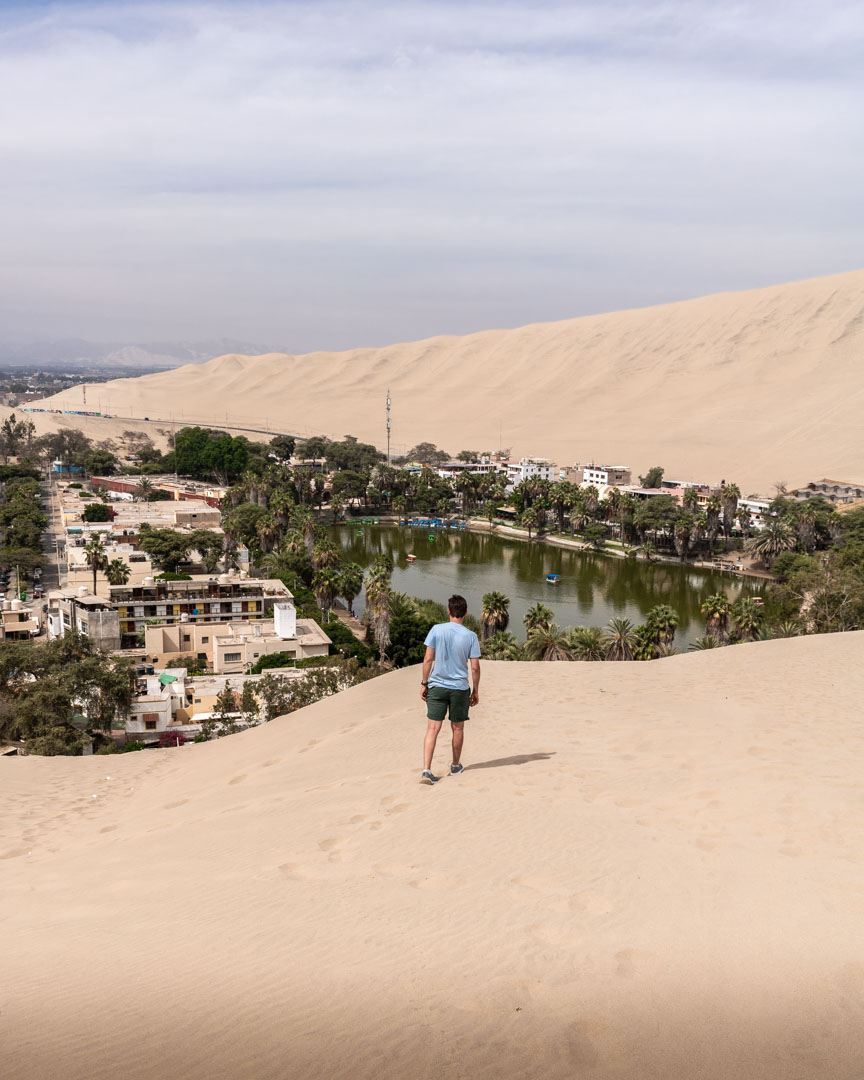
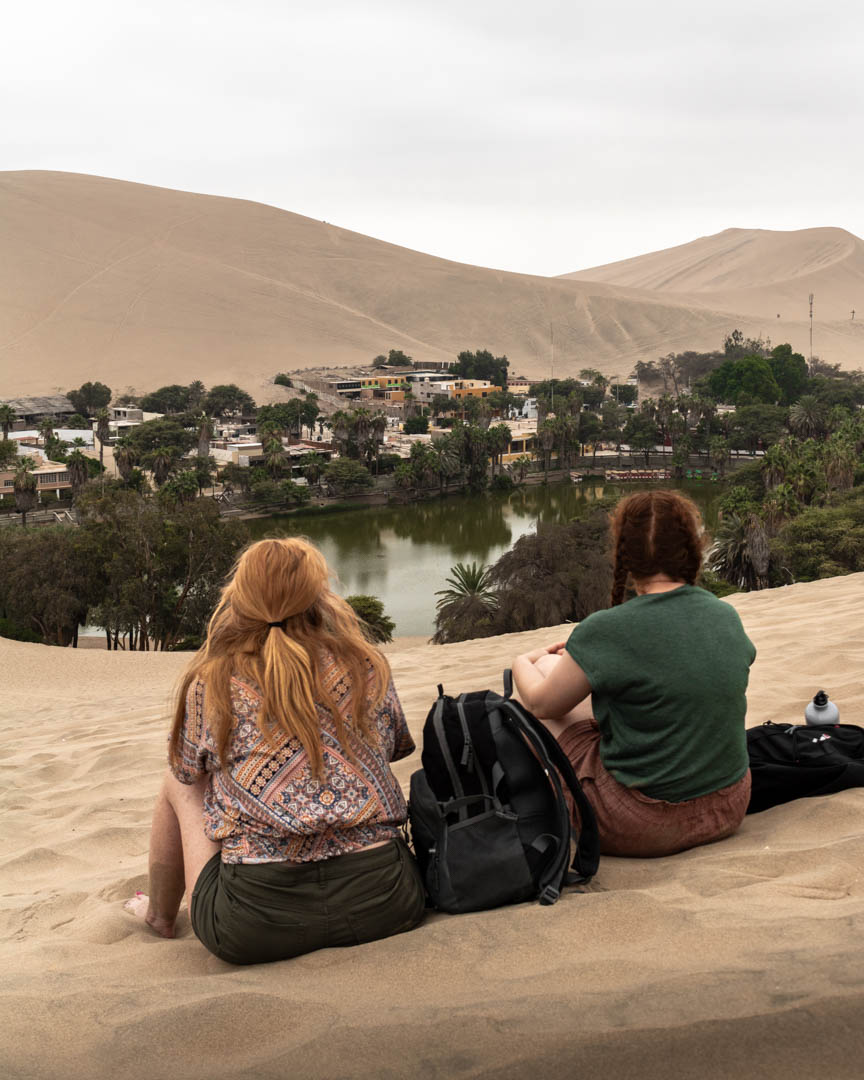
Our next stop on this 2 week Peru itinerary is the desert oasis of Huacachina. You’ll take a bus to Ica (1-1.5 hours), and then a 10-minute tuk-tuk ride to Huacachina so it’s easy to reach.
This awesome destination is one of the most popular places in Peru and it’s not hard to see why. The towering sand dunes certainly grab your attention upon arrival and there are plenty of other things to do. Not to mention there are some fantastic restaurants and bars here where you can chill out.
In our opinion, you don’t need more than half a day in Huacachina or even a few hours. As such, we’d recommend catching the bus back to Lima from Ica in the evening (it generally takes between 4.5 – 5.5 hours) rather than staying overnight.
Things to Do in Huacachina
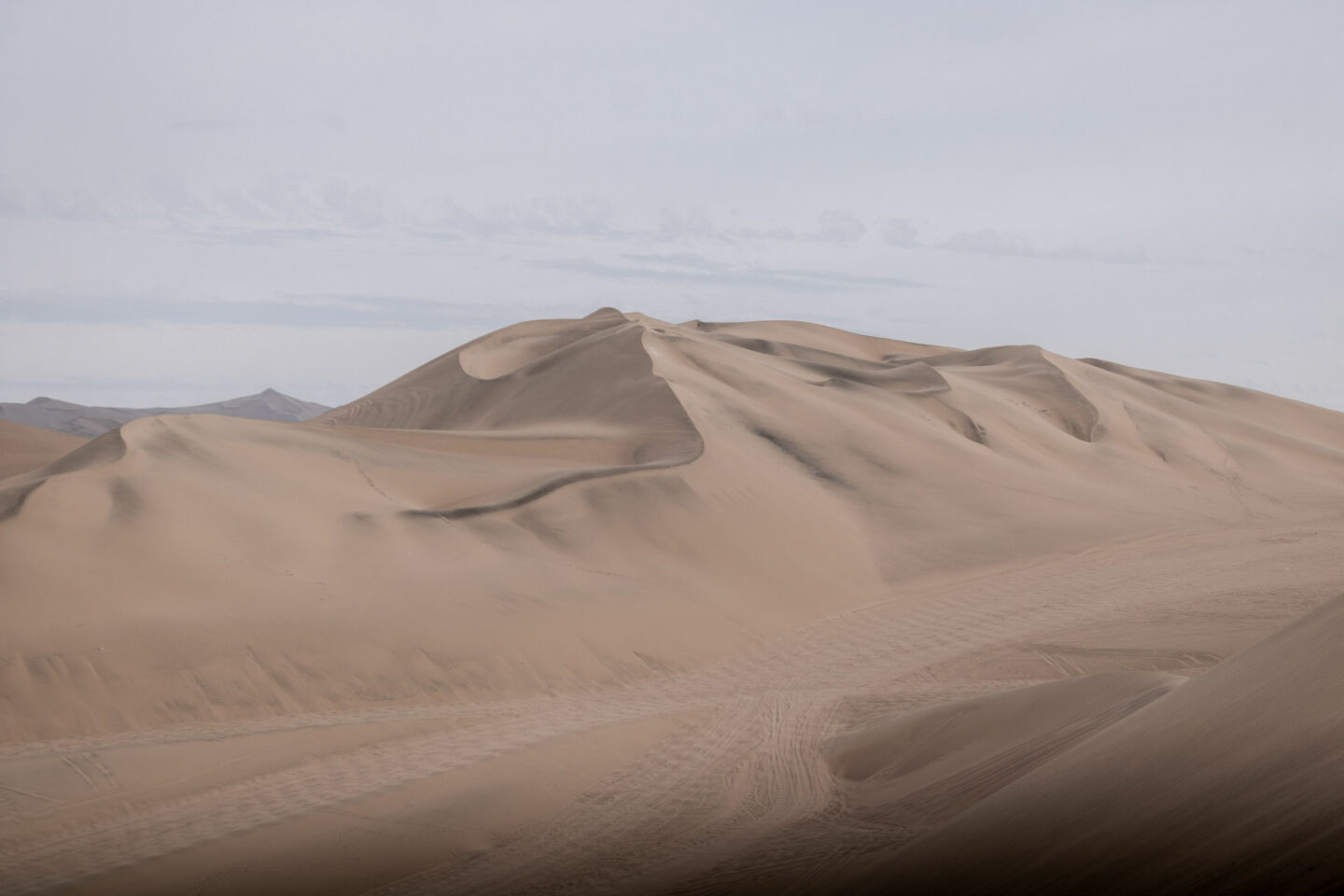
By far the best thing to do in Huacachina is walk up the sand dunes. This desert oasis is surrounded by dunes on every side, and from the top, you’ll be treated to striking views of the surrounding area.
Some of the dunes are relatively flat and small while others are extremely steep. We’d recommend hiking up to the tallest dunes to get the best views but just beware of the heat.
Here are some other things to do in Huacachina:
- Explore the dunes on a sand buggy – This 2-hour tour includes a buggy over the dunes and sandboarding equipment. Tours typically start late afternoon so you can watch the sunset.
- Admire the views from a rooftop bar
- Try out sandboarding on the dunes
- Enjoy Huacachina’s nightlife
- Rent A Pedalboat On The Oasis
- Walk around some of the local markets
Where to Stay in Huacachina
Budget: Desert Nights Hostel
One of the most affordable hostels in Huacachina, this is a great option for backpackers. It offers both dormitory beds and private rooms (which sleep up to four people) so there’s something for families too.
On-site, you’ll benefit from laundry facilities, a tour desk, a bar, and a shared lounge. For those looking to keep costs low, there’s a shared kitchen where you can cook meals.
Mid-range: Hospedaje Ana Claudia
If you don’t mind spending a bit more then check out Hospedaje Ana Claudia. Not only are the rooms comfortable but you’ll have breakfast and free WiFi included in your stay.
Additional amenities include an on-site restaurant, tour desk, garden area, and currency exchange services. This place also offers luggage storage for your convenience which is always a huge bonus.
How to Get Around Huacachina
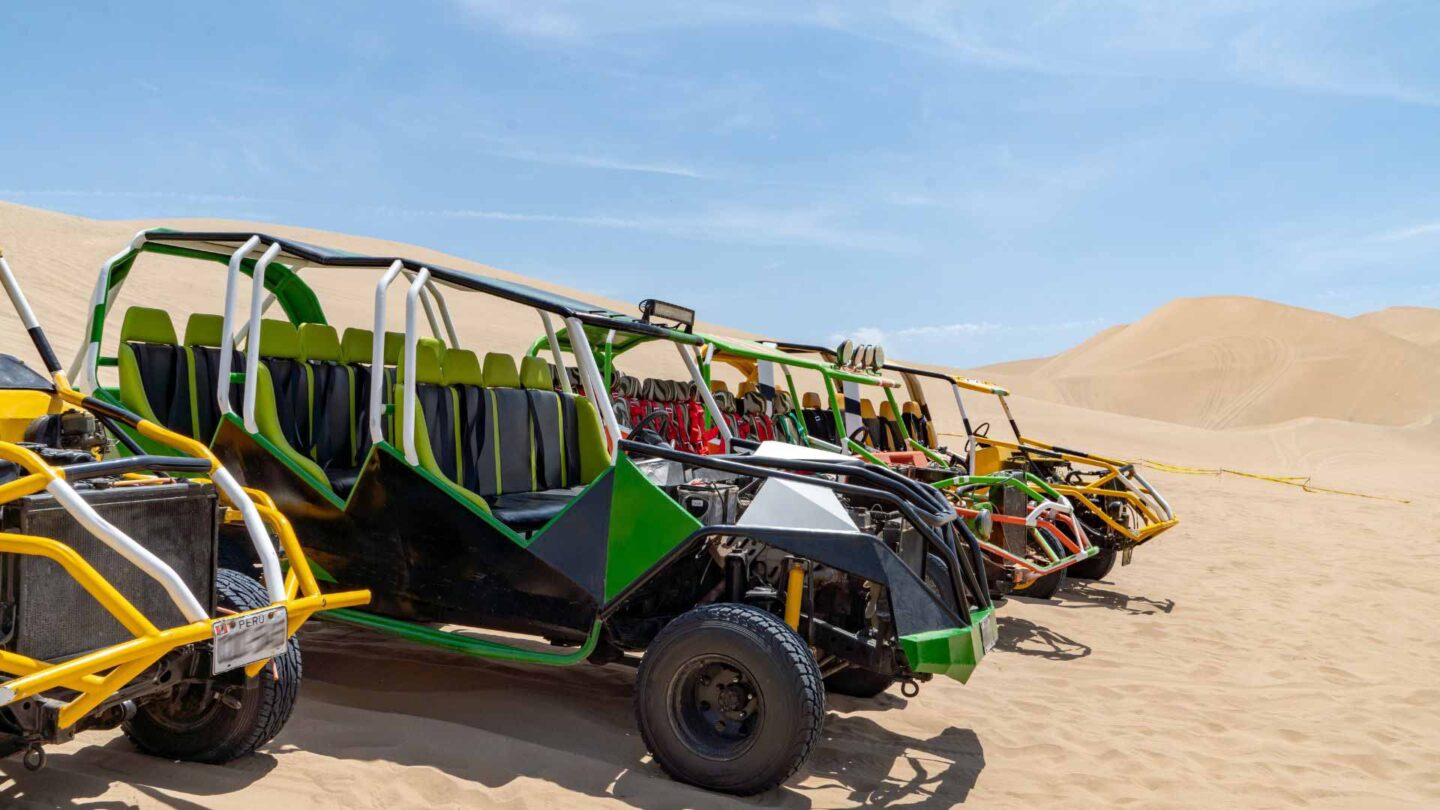
Huacachina is only a small place so you won’t need to use public transport (not that there is any). You can easily get around on foot, and we walked everywhere. This goes for the towering sand dunes too!
Just be mindful of the heat as it can get pretty hot in the afternoon. As such, we’d recommend hiking up the dunes during the morning or late afternoon. If you want to explore more of the dunes, then your best option is to head out on a dune buggy tour.
Also, keep in mind that while you’re walking around, there isn’t much shade in the area so wear a hat and plenty of sunscreen.
Days 5-8: Cusco
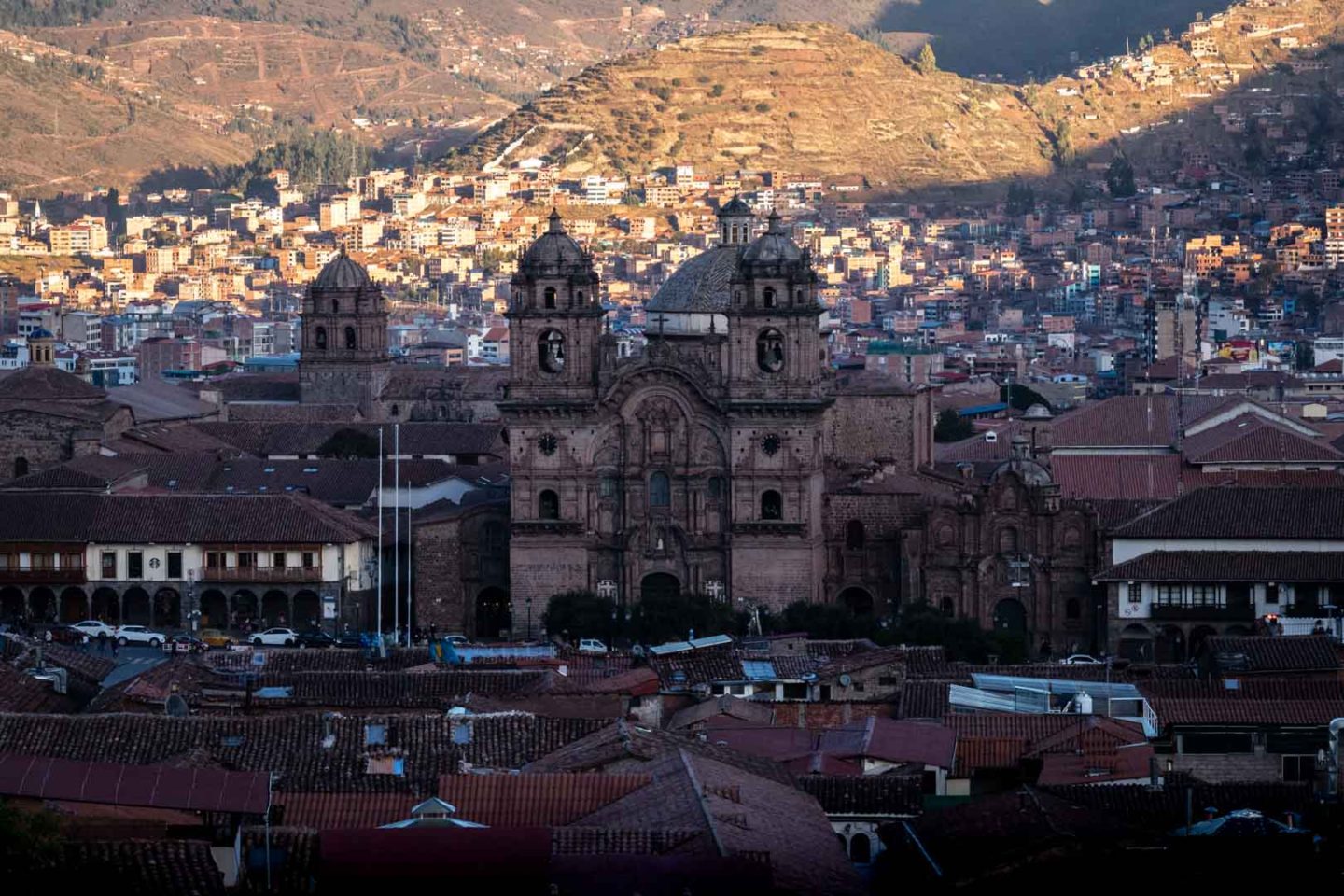
Cusco is a must for any 2 week Peru itinerary. After catching the bus back to Lima from Huacachina, it’s time to catch a flight to this historic city (this takes around 1.5 hours).
Located in the Peruvian Andes, Cusco is one of the most breathtaking places we’ve ever visited. Known for its Inca ruins, colonial architecture, and unique charm, this city is a must-visit. For the best experience, we’d suggest spending at least 3-4 days here as there are plenty of awesome day trips too!
While exploring Cusco, you’ll need to be mindful of the altitude. The city is located at 3,399 metres (11,152 feet) above sea level which is above Machu Picchu. As such, you’ll need to spend a day or two getting used to the elevation so take it easy.
Things to Do in Cusco
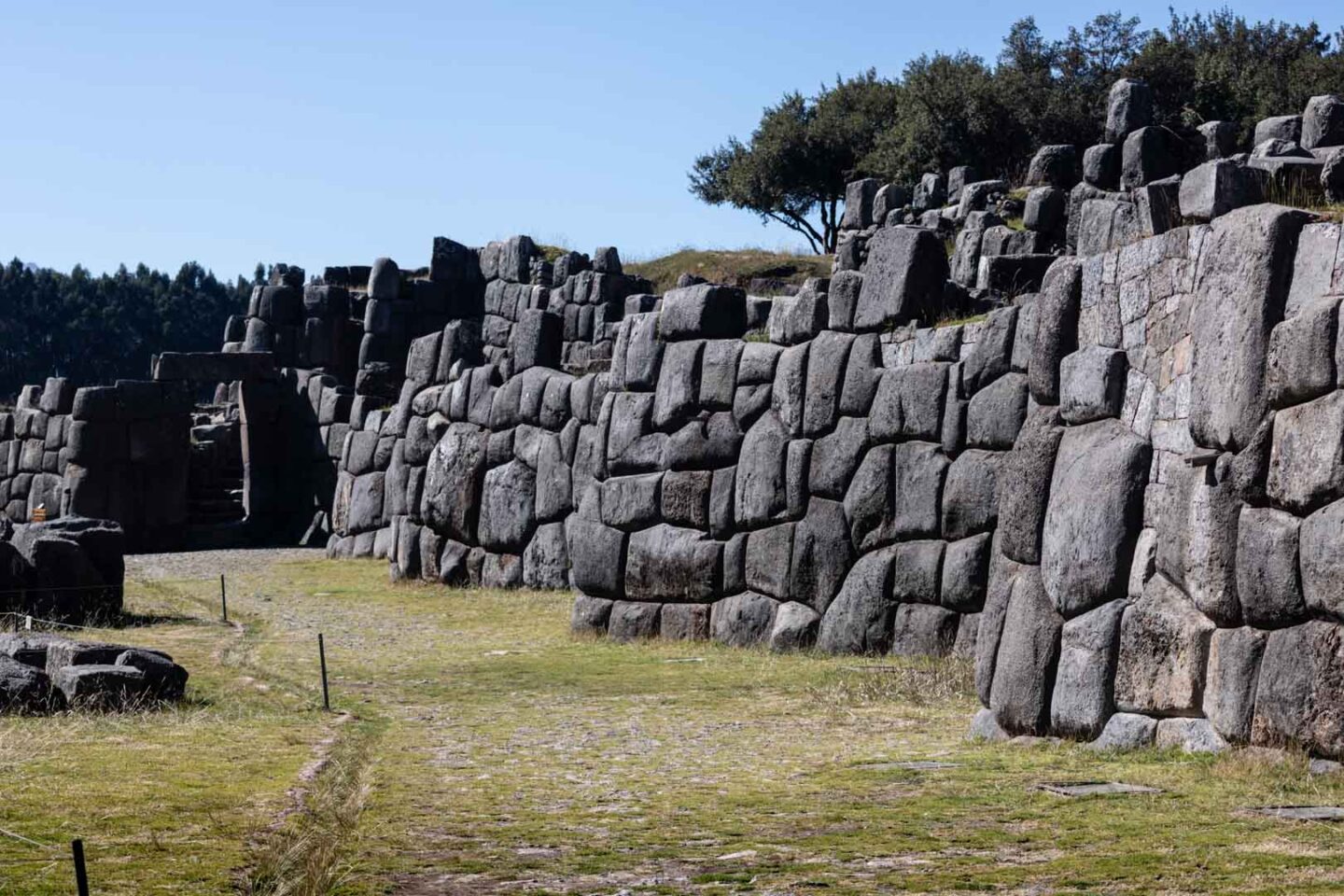
A highlight of your visit to Cusco will be the Plaza De Armas. It’s the beating heart of the city, surrounded by two imposing buildings; Cusco Cathedral and Iglesia de la Compañía de Jesús.
Here, you’ll find a variety of bars, restaurants, shops, and tour operators, so it’s a great place to wander around. For the ultimate experience, explore the square both during the day and at night.
Here are some other things to do in Cusco:
- Visit Qorikancha
- Explore Saqsaywaman – With this small group tour, you’ll get to explore the four main ruins outside of Cusco; Saqsaywaman, Qenko, Puca Pucara, and Tambomachay.
- Admire the views from Mirador De Plaza Sán Cristobal
- Take a day trip out to the Sacred Valley – We opted for this half-day tour which included a visit to the Chinchero Weavers, Moray, and Salineras De Maras.
- Have a drink at Paddy’s Irish Pub
- Walk around San Pedro Central Market
Where to Stay in Cusco
Budget: Hostal Qolqampata
During our time in Cusco, we stayed at two places, one of which was Hostal Qolqampata. This affordable property is just a 10-minute walk from the main square and the owner is lovely!
A highlight of this place has to be the charming terrace area which boasts stunning city views. The rooms sleep 2-6 people and include a private bathroom and free WiFi. Free airport transfers are also available.
Mid-range: Cozy Room Cusco
Cozy Room Cusco is where we stayed on our second visit to the city. It’s just a 15-minute walk from Plaza De Armas. The rooms are comfortable here and you’ll have breakfast included in your stay.
This hotel also boasts a rooftop terrace which is the perfect place to relax after a full day of exploring. There’s also a shared kitchen up here where you can cook your own meals.
Luxury: JW Marriott El Convento Cusco
For a luxurious getaway, check out JW Marriott El Convento Cusco. This stunning 5* hotel is just three blocks away from the main square and its beauty is unparalleled.
Home to parquet floors, sculpted stone arches, and a charming colonial courtyard, this hotel has a lot to offer. You’ll also find Peruvian artefacts on-site, as well as a spa, heated pool, and two restaurants.
How to Get Around Cusco
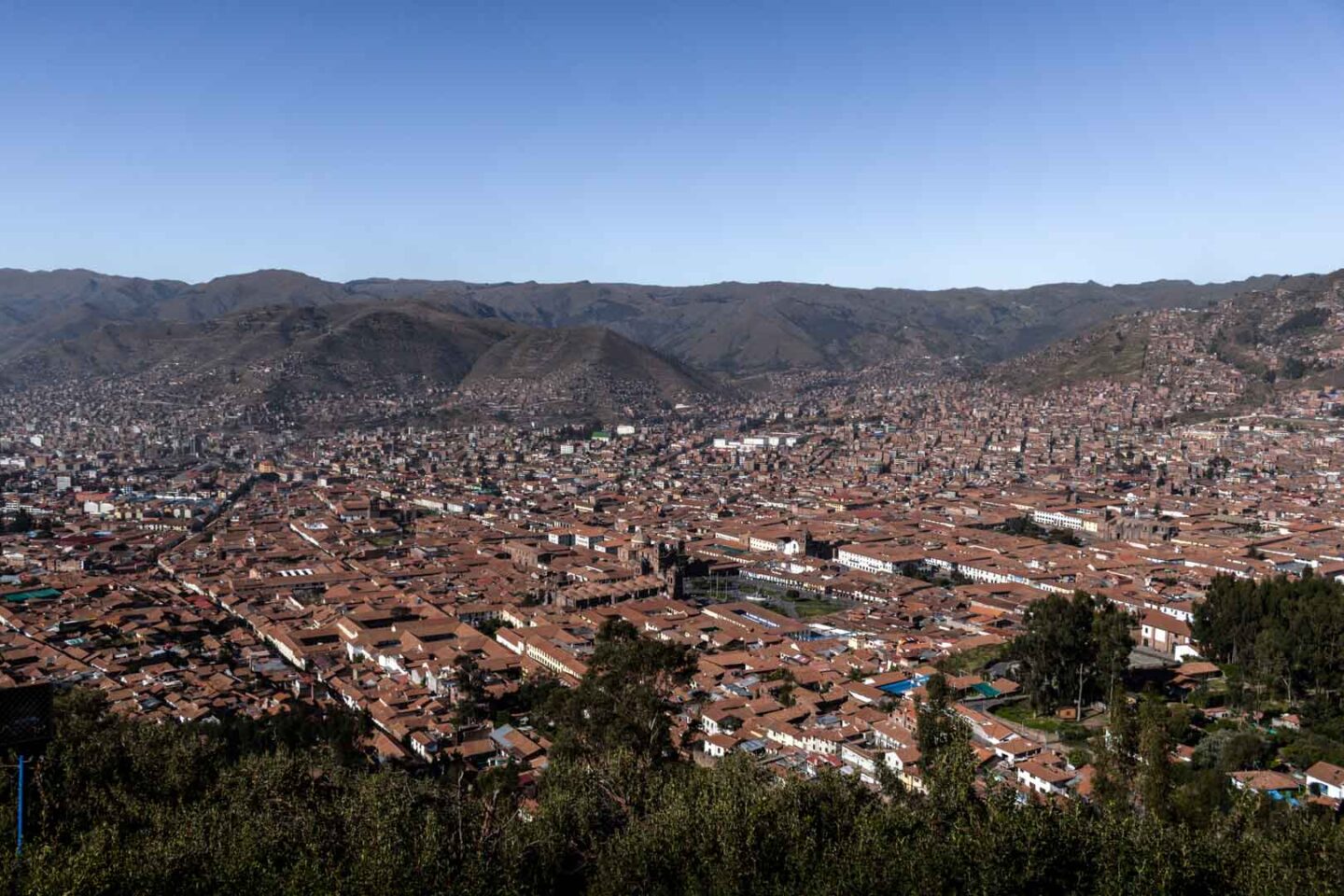
The great thing about Cusco is that many of the attractions are located close together near the main square. This includes Cusco Cathedral, Iglesia de la Companía de Jesús, ChocoMuseo, and Museo Inka.
However, to make the most of this 2-week Peru itinerary, you’ll need to use some form of transport. We’d recommend using Uber which is both cheap and reliable. It’s what we used during our time in the city!
There are also plenty of local buses throughout Cusco and these are very affordable. For sites outside of the city, there are lots of tours to choose from or you can hire a car.
Days 9-10: Aguas Calientes
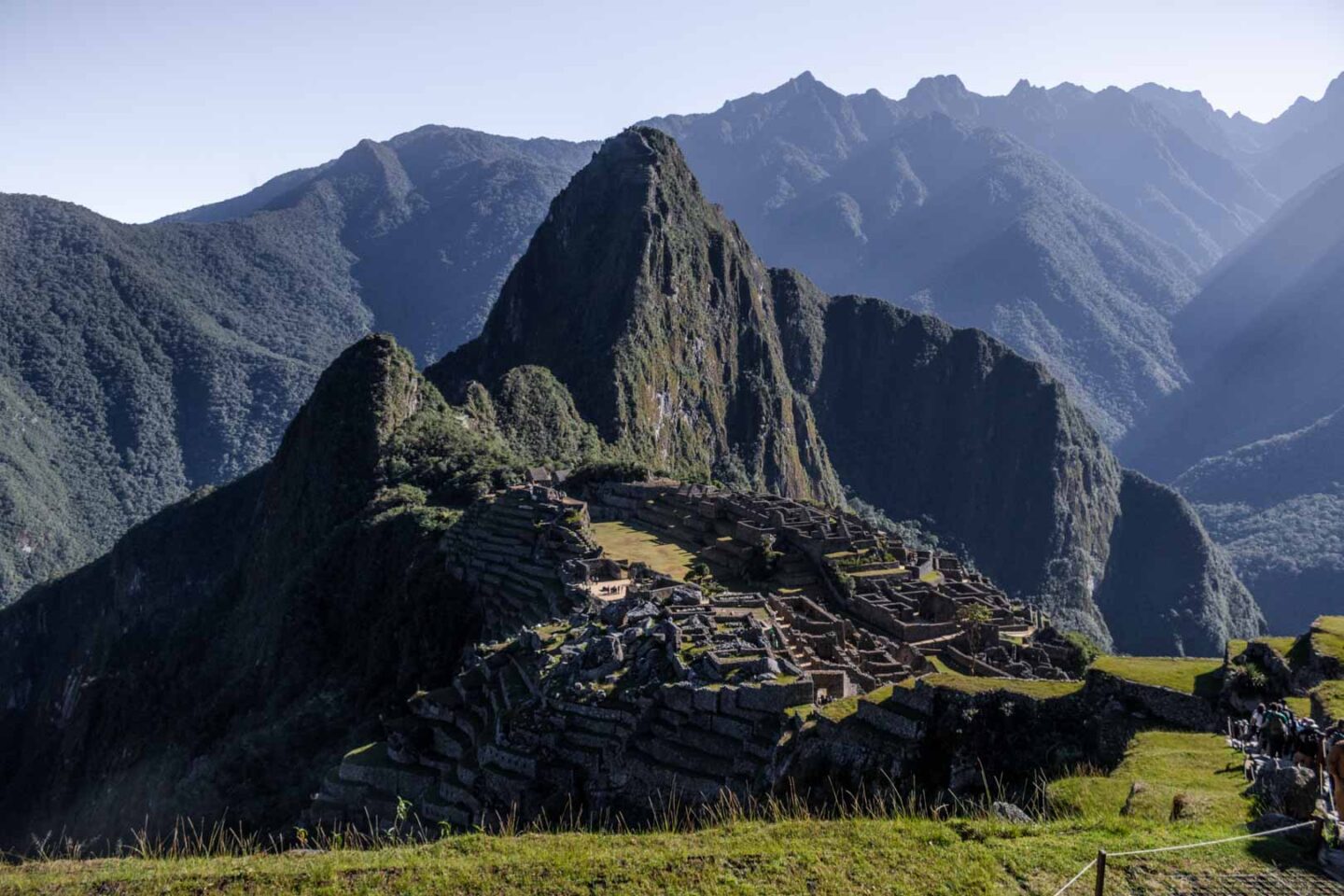
No 2-week Peru itinerary is complete without heading to Aguas Calientes. Acting as the ‘gateway to Machu Picchu’, this charming town is a highlight of many people’s visit to the country.
Aguas Calientes is located in the Urubamba River Valley and is incredibly remote. There are no roads leading here. In fact, you can only catch the train (with either PeruRail or IncaRail), or hike from Hidroeléctrica which takes much longer.
Known for its breathtaking landscapes, riverside restaurants, and quirky markets, Aguas Calientes has a lot to offer. However, it’s the famous Incan, Machu Picchu that attracts many visitors here.
Considering how small this town is, there’s plenty to do. Whether you’re looking to relax in hot springs or try the local cuisine, there’s something for everyone.
Things to Do in Aguas Calientes

Machu Picchu is one of the most famous landmarks in Peru and is easily accessible from Aguas Calientes, either by bus or hiking. Alternatively, you can hike the Inca Trail but this takes 3-5 days.
Nestled in the Andes Mountain Range, Machu Picchu is located at an elevation of 2,430 metres (7,972 feet) above sea level. Dating back to the 14th century, these Incan ruins are a world wonder.
Here are some other things to do in Aguas Calientes:
- Visit Manuel Chávez Ballón Site Museum
- Shop for souvenirs in the local markets
- Hike up Putucusi Mountain
- Walk to the Mándor Waterfall
- Wander around Manco Capac Plaza
- Get a Machu Picchu stamp on your passport
Where to Stay in Aguas Calientes
Budget: Inkas Land
As one of the cheapest places in Aguas Calientes, Inkas Land is perfect for budget travellers. It’s located in the heart of town and is just a short walk from the Machu Picchu bus stop.
The rooms at this property are spacious and cosy, and you’ll have free WiFi and a private bathroom. You’ll have breakfast included in your stay and there’s a shared lounge where you can relax.
Mid-range: Mistico Machupicchu Eco B&B
This is where we stayed while in Aguas Calientes. Mistico Machupicchu Eco B&B is a gorgeous property that’s located right near the town’s hot springs. There are plenty of restaurants nearby too!
The rooms in this place are beautiful and some feature a private balcony with mountain views. You’ll also have breakfast included in your stay and there’s free WiFi, as well as a shared lounge.
Luxury: Inkaterra Machu Picchu Pueblo Hotel
Just a short walk from the centre of town, you’ll find Inkaterra Machu Picchu Pueblo Hotel. This luxurious hotel offers a variety of amenities including an on-site spa, restaurant, and lounge library.
The rooms at this hotel are gorgeous, especially the suites which are very spacious. Some of them even offer a private outdoor area, and you’ll have breakfast and dinner included in your stay.
How to Get Around Aguas Calientes
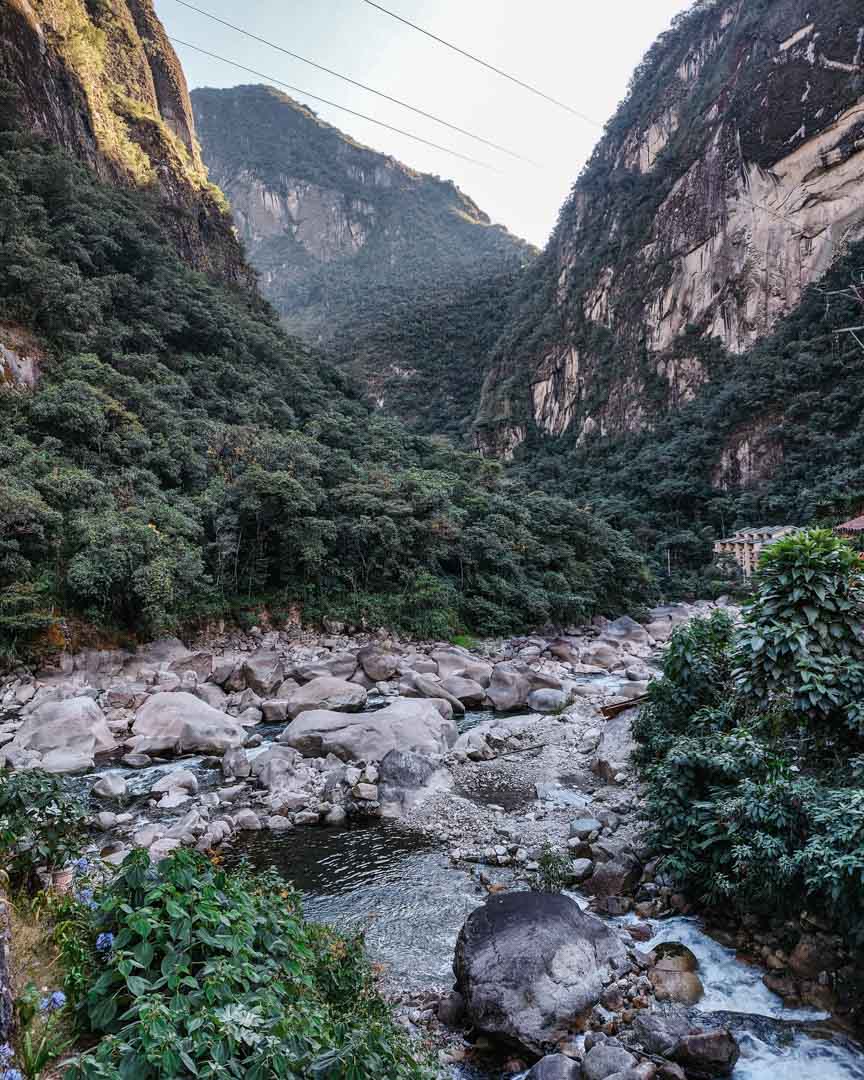
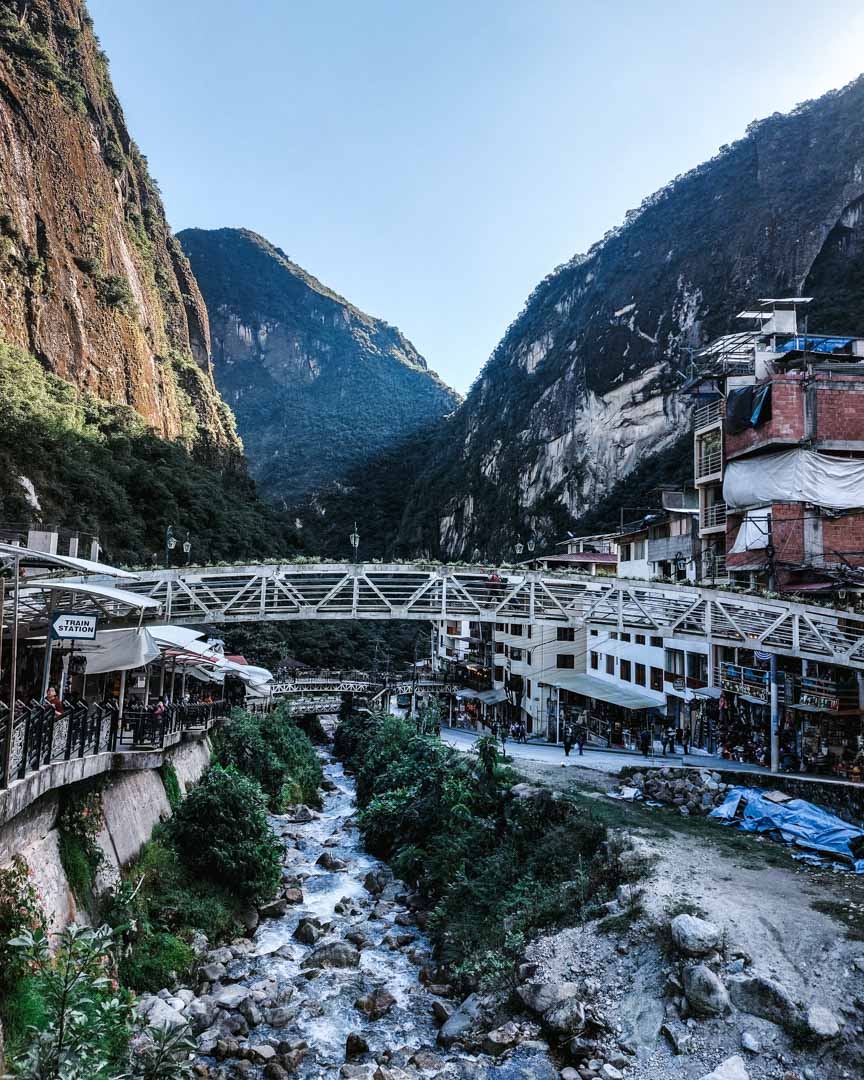
You won’t have any problems getting around Aguas Calientes as it’s very small. The Artisan markets, shops, and restaurants are all located close together, within walking distance.
Of course, for those visiting Machu Picchu, you’ll need to head out of town. You can either catch the bus (which is what we’d recommend), or you can hike up, although you’ll waste time this way.
Now, there are plenty of things to do outside of Aguas Calientes. However, there are no public buses in this area and hardly any cars, so you’ll need to get around yourself by walking. Luckily, many of the attractions are just a short distance away.
Day 11: Cusco
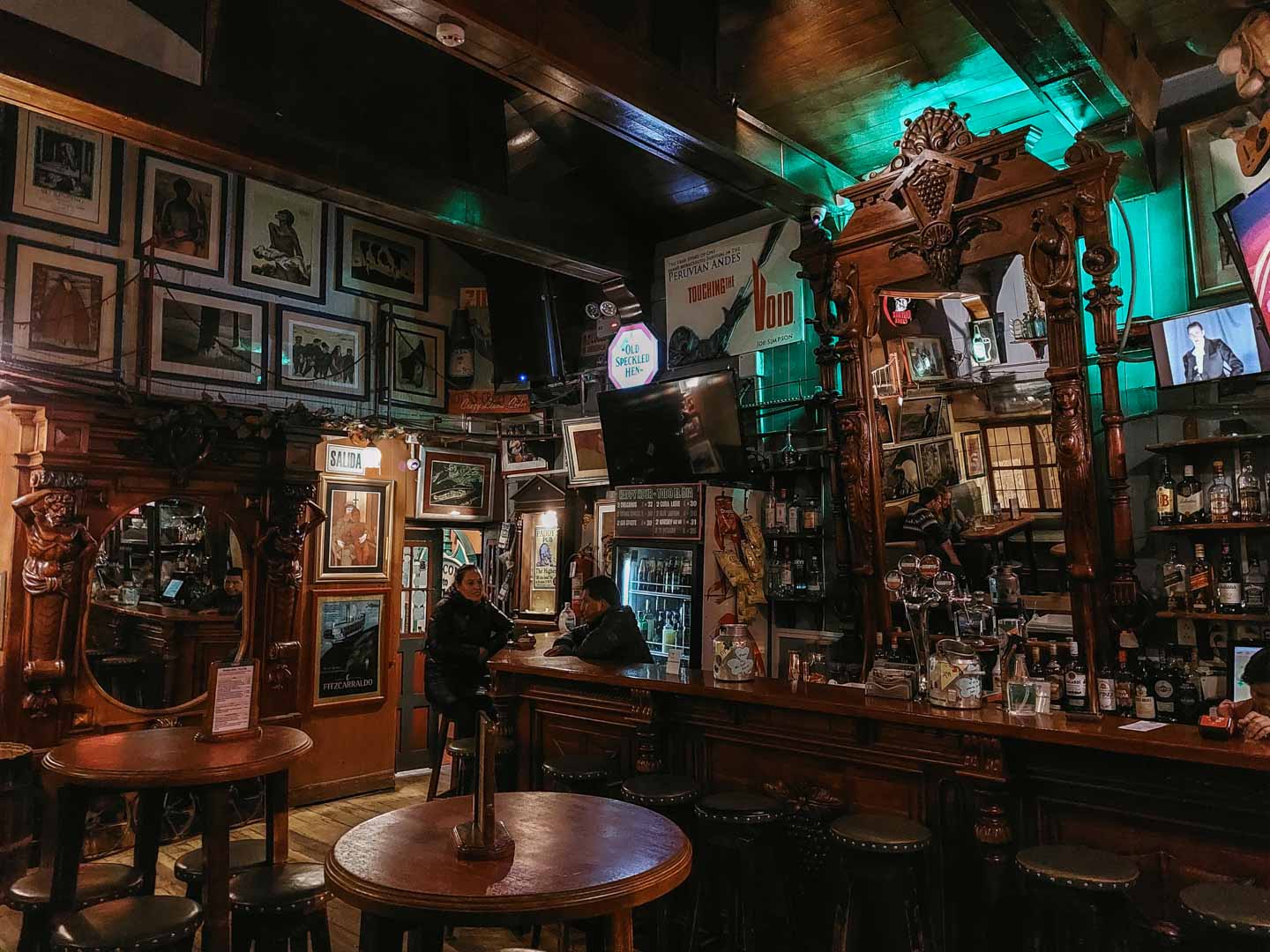
As Aguas Calientes is so remote, you can’t reach our next destination from here. Instead, you’ll need to travel back to Cusco. To save time, we recommend catching the earliest train. This means you’ll be back in the city by 3 pm which gives you an extra afternoon of exploring.
We know this 2-week Peru itinerary is action-packed, but you’ll have the rest of the afternoon to relax. Luckily, there are plenty of great bars and restaurants where you can do so! We’d recommend Paddy’s Irish Pub which offers some great food and of course, plenty of drinks.
Next, we’ll be heading to the Peruvian Amazon, Puerto Maldonado in particular. From Cusco, you can either fly (although you’ll need to change in Lima) or you can catch the overnight bus. We did the latter as this saved us a night of accommodation costs.
Days 12-14: Tambopata National Reserve (The Amazon Rainforest)
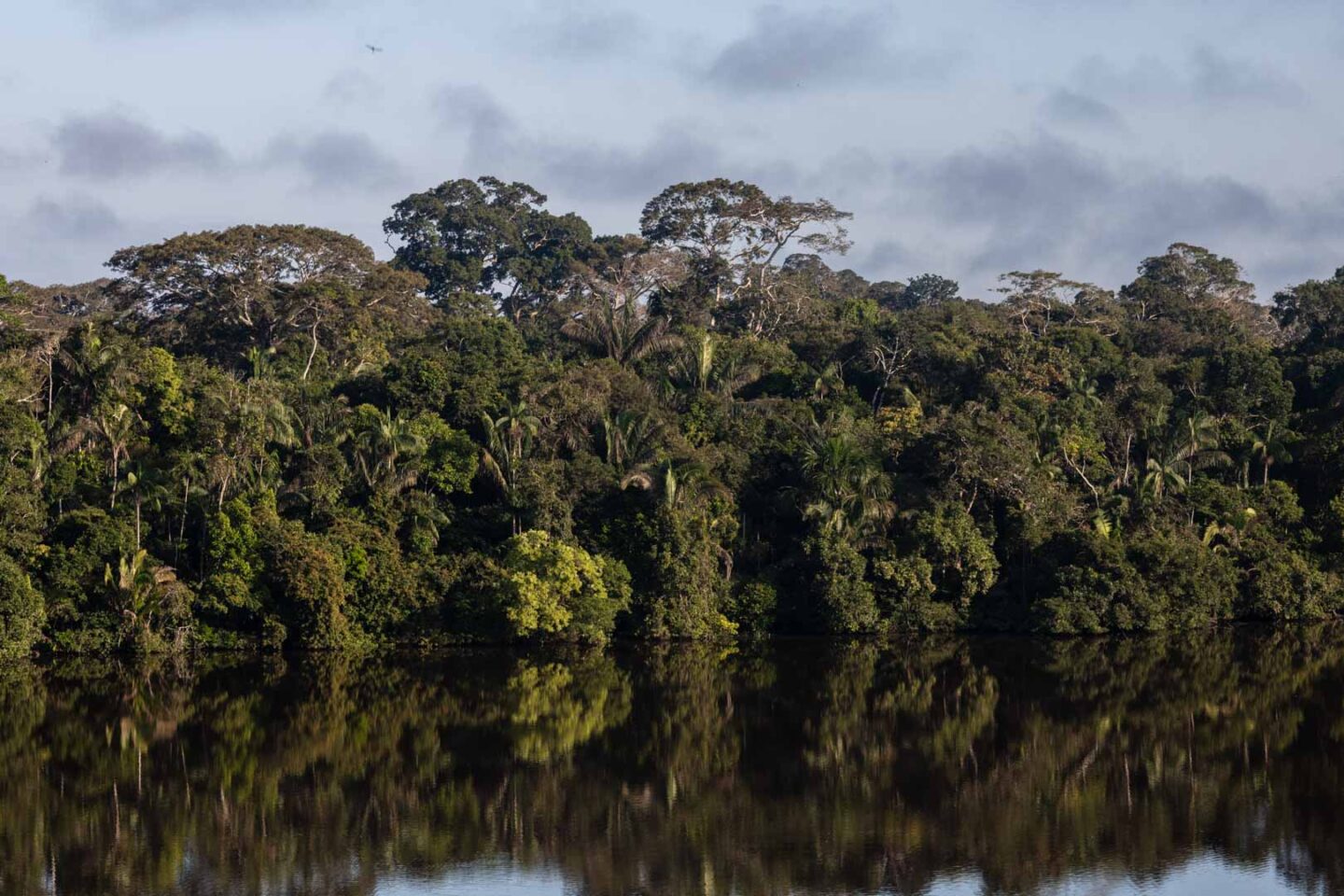
The final stop on this 2-week Peru itinerary is Tambopata National Reserve. Located in the Amazon Rainforest, this reserve is known for its fantastic wildlife-watching opportunities!
Covering 274,690 hectares, Tambopata is incredibly biodiverse. Here, you can spot a variety of wildlife including jaguars, sloths, giant otters, tapirs, anacondas, and caiman. There are also over 10,000 plant species found in Tambopata, and there are plenty of awesome activities on offer.
Unlike many areas of the Amazon, this reserve is surprisingly accessible too. You’ll first travel to the city of Puerto Maldonado, where you’ll then take a jeep and boat ride to the outskirts of the reserve. This journey time will differ depending on where you’re starting (it took around 1.5 hours for us at Chuncho Lodge).
Things to Do in Tambopata National Reserve
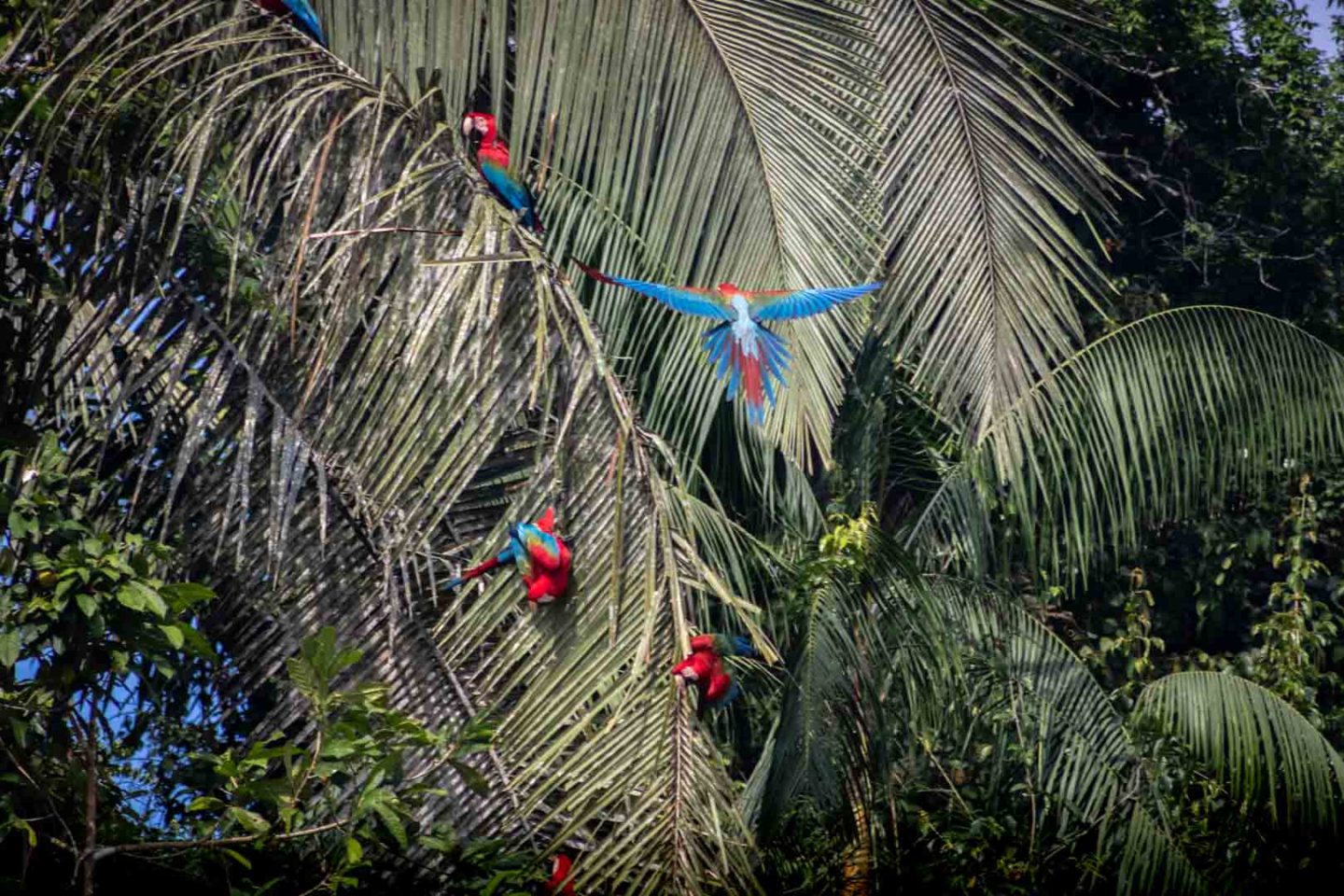
One of the best things to do in Tambopata is to head out on a river cruise. These offer the best chance of spotting wildlife, especially as you can visit one of the reserve’s clay licks.
The river cruises will typically take you along Río Tambopata or Río Madre de Dios (depending on where you’re staying). They last for at least an hour, but often longer so keep your eyes peeled for wildlife!
Here are some other things to do in Tambopata National Reserve:
- Explore Sandoval Lake
- Visit one of the reserve’s clay licks
- Head out on a night walk
- Admire the views from a canopy tower
- Spend some time stargazing
- Visit the native communities
Where to Stay in Tambopata National Reserve
Chuncho Lodge
Staying at Chunco Lodge was a highlight of our 2-week Peru itinerary! We opted for the 4-day Tambopata Expedition which includes food, accommodation, transport, excursions, and your guide.
The lodge itself was beautiful, and all of the staff went out of their way to give us an amazing experience. Not only that, but we got to see a whole load of wildlife from Chuncho including monkeys and toucans.
How to Get Around Tambopata National Reserve
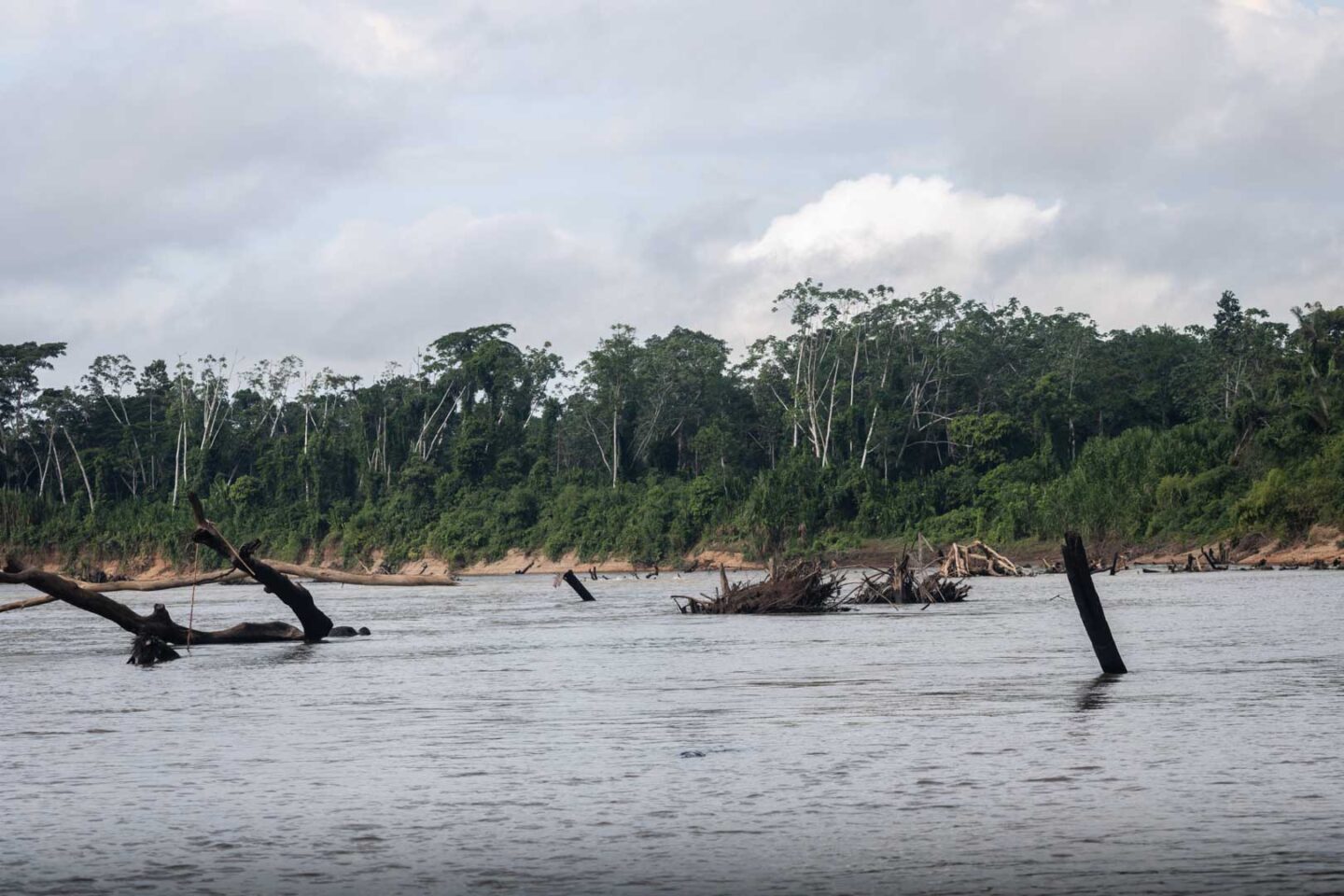
The key thing to note about Tambopata National Reserve is that there are only a couple of lodges located in the reserve itself (including the Tambopata Research Center). Some of these are found at Sandoval Lake, a separate part of the reserve.
If you stay outside of the reserve, you’ll be travelling into Tambopata daily by boat or hike, depending on where you’re staying.
The key thing to remember is that it’s mandatory to visit the reserve with a guide. If you book a package tour like we did, then these will typically include a guide so you won’t need to pay extra.
*We’d recommend allowing an extra day to fly back to Lima, and then catch your flight home. This means you won’t rush your time in the Amazon.
Only have a week in Peru?
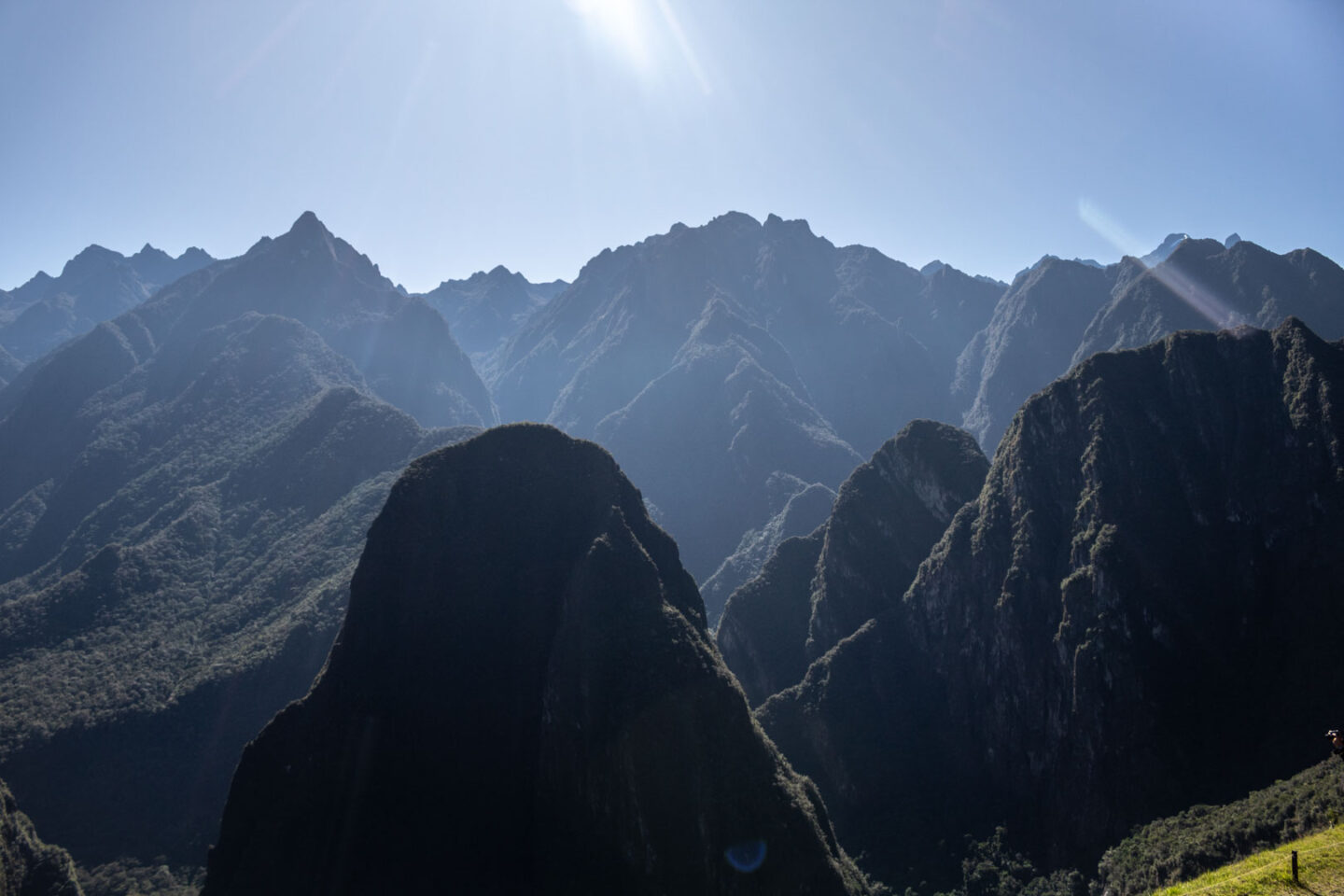
Although we’d recommend spending at least 2 weeks in Peru, not everyone has that amount of time. If you only have one week then you’ll need to condense this itinerary.
Below is an example itinerary of how you can spend your time in the country, so you can still explore the highlights.
Lima: Days 1-2
Cusco: 3-5
Aguas Calientes: 6-7
*On day 7, you’ll explore Machu Picchu in the morning and then head back to Cusco (from there you’ll likely take a connecting flight to Lima. We’d recommend leaving an extra day free (day 8) for your journey back home if you can.
Where Else Should You Visit In Peru?
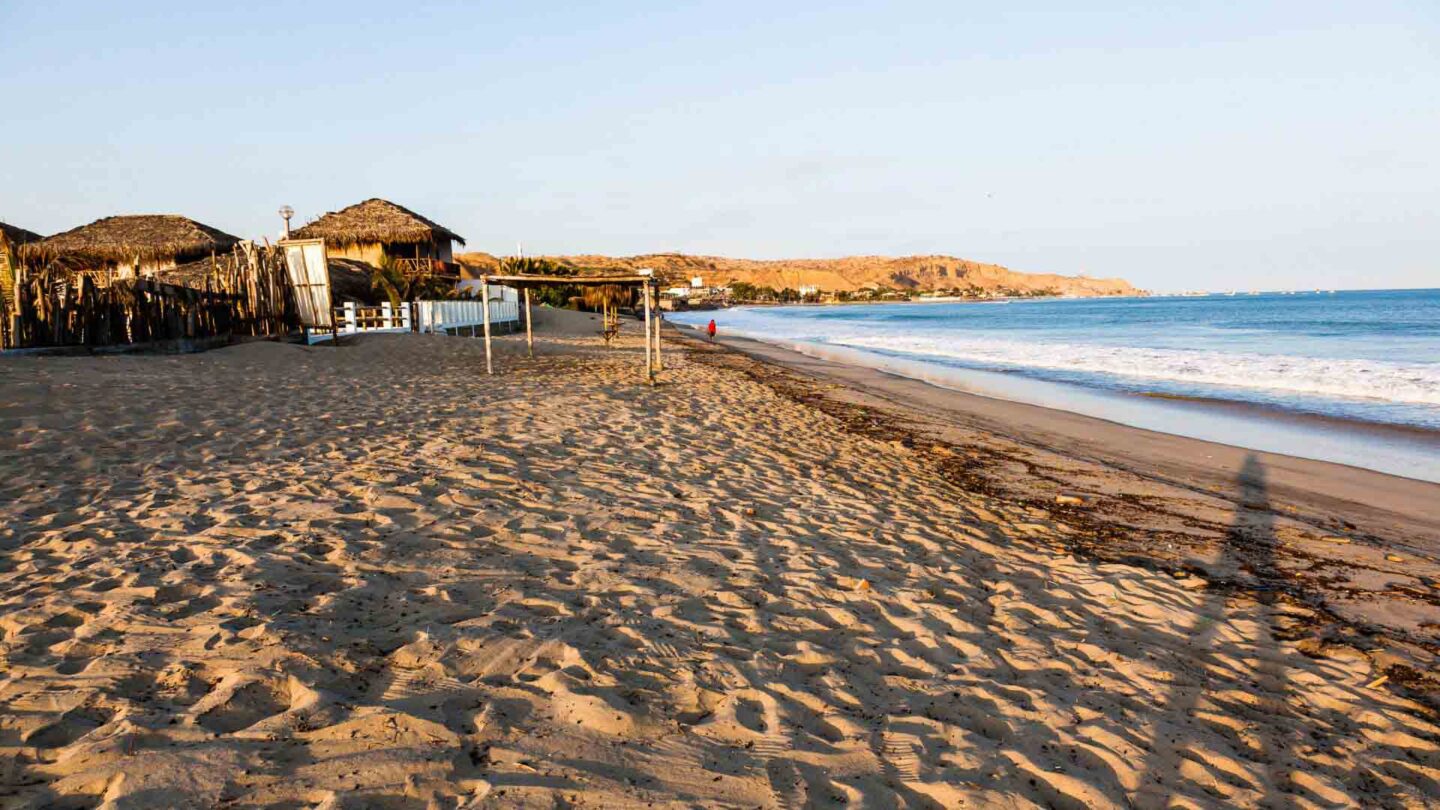
For those lucky enough to be planning a 1 month Peru itinerary (or even three weeks), there are some other fantastic places to visit.
Let’s take a look at some of the other options!
Arequipa
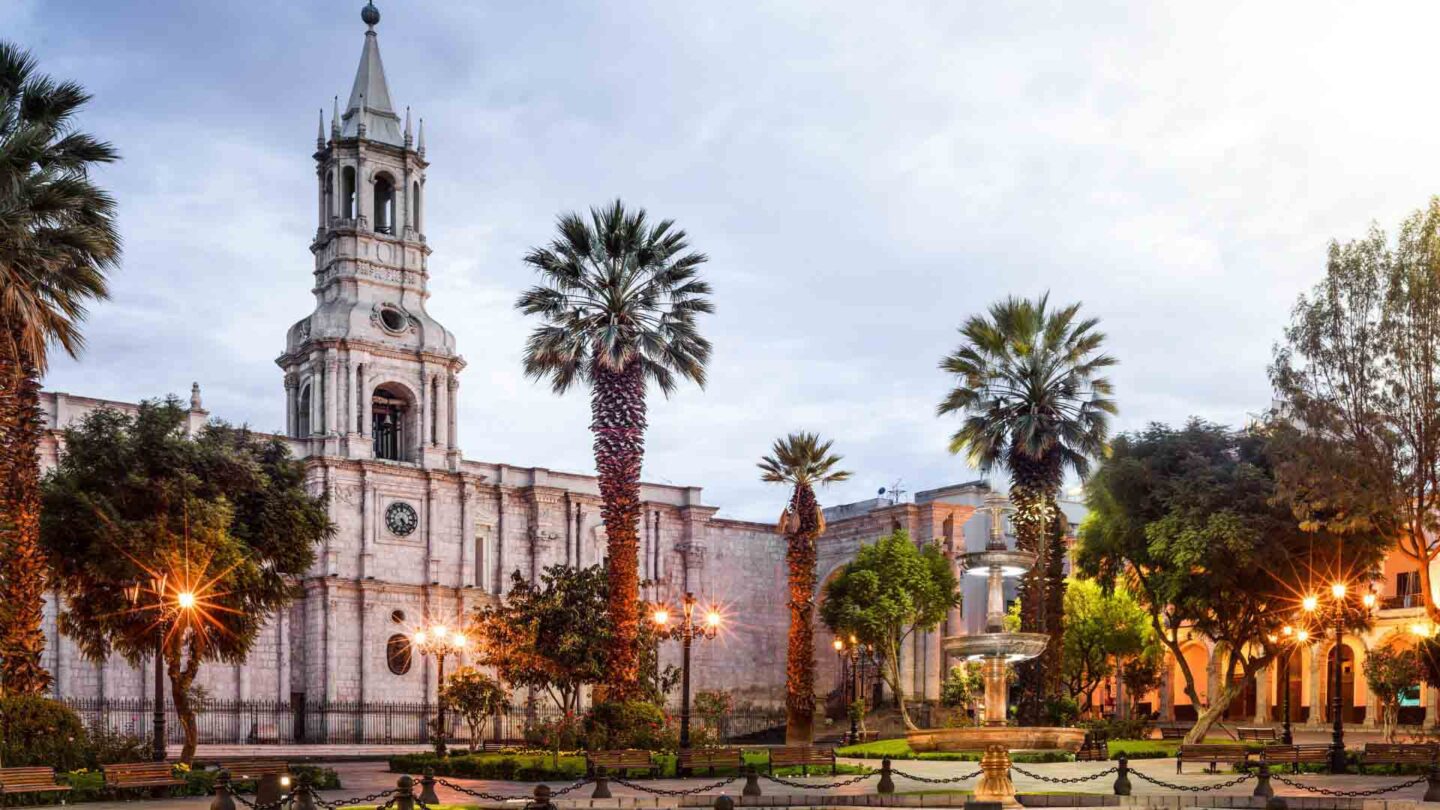
Known as the ‘White City’, Arequipa boasts colonial charm, beautiful buildings made from volcanic stone, and delicious food. Not to mention the city is surrounded by four towering volcanoes; Ampato, Chachani, Misti, and Pichu Pichu.
Another reason to visit Arequipa is that Colca Canyon can be visited on a day trip from here. It’s the second deepest canyon in the world, at 3,400 metres (11,154 feet) at its deepest point.
Some of the top attractions in Arequipa include Plaza de Armas, Santa Catalina Monastery, and Mercado San Camilo. Try to allow two days for your visit (3 if you’re planning to see Colca Canyon too).
Huaraz
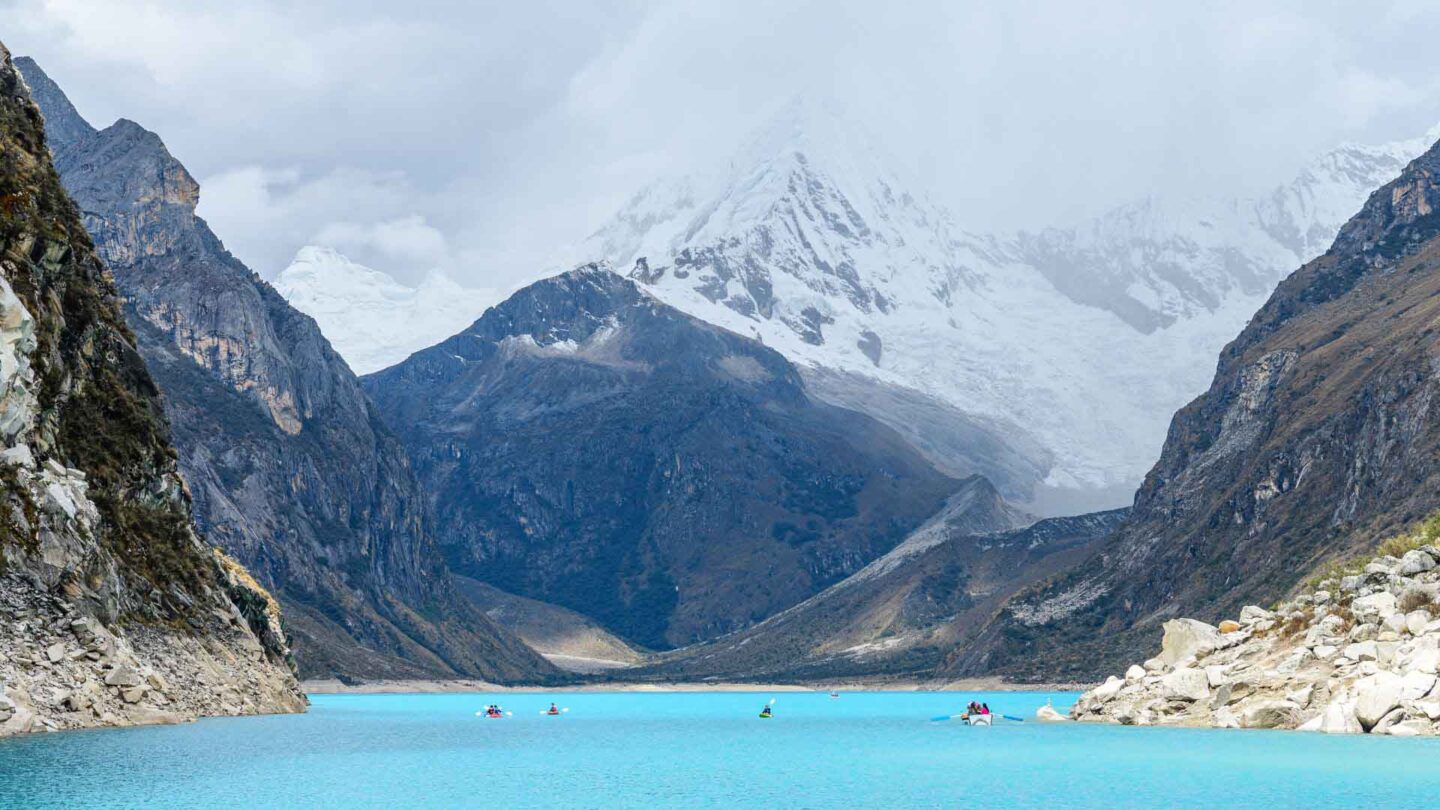
The city of Huaraz is located 400 km north of Lima (by road), and it’s a hiker’s paradise. Surrounded by the Cordillera Blanca range and its snow-capped peaks, ample outdoor adventures are waiting for you! Especially as Huarascán National Park is located nearby.
Huaraz is located at an altitude of over 914 meters (3,000 feet) above sea level. As such, altitude sickness can be a pain here, so take it easy for your first few days, rather than heading straight out for a hike.
Of course, if you’re looking for a more laid-back trip, then spend some time exploring the city.
Lake Titicaca
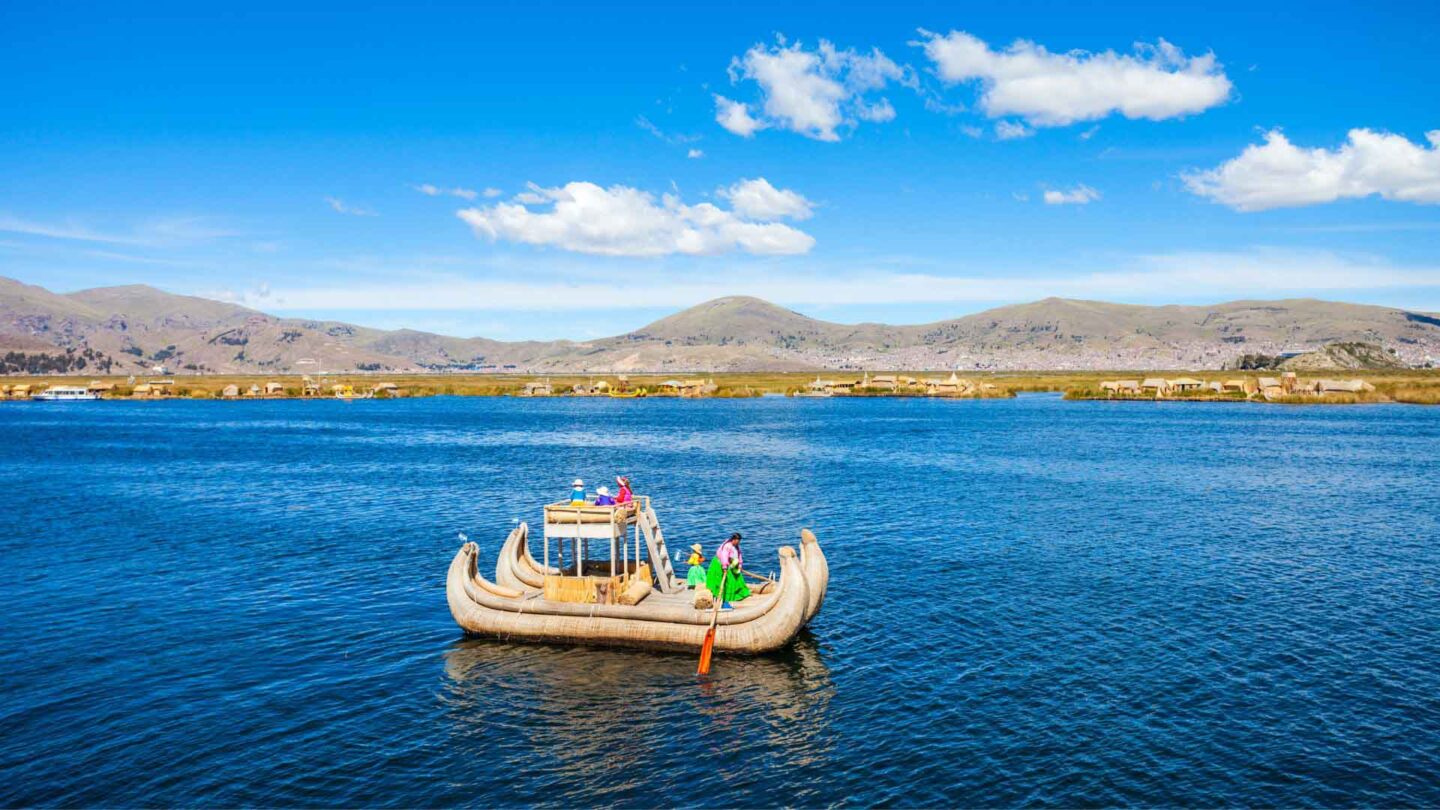
If you plan to spend longer than 14 days in Peru, add Lake Titicaca to your itinerary. Straddling both Bolivia and Peru, it’s the largest lake in South America and sits at 3,812 metres (12,507 feet) above sea level.
Puno is the largest city along Lake Titicaca and is where many people choose to base their visit. It’s considered to be the country’s Folkloric Capital. From here, you can explore the lake and head out on a guided tour of the Uros Floating Islands.
For those who are backpacking South America, you can actually travel into Bolivia from this area.
Iquitos

If you’re following this 2 week Peru itinerary, then you’ll already be exploring part of the Amazon Rainforest. As such, it doesn’t make much sense to visit Iquitos.
However, if you have longer than 2 weeks in Peru, we’d highly recommend heading here. This Amazonian city can only be accessed by boat or air, yet is very well-developed.
The highlight of any visit to Iquitos is taking a cruise through the Amazon as you’ve got a chance to spot the charming ‘pink’ river dolphins, as well as other wildlife. However, there are plenty of attractions in the city itself too.
How to get to Peru

If you’re already travelling through South America, then you can enter Peru by land. Brazil, Bolivia, Chile Colombia, and Ecuador all border Peru so you’ve got plenty of overland options. There are a variety of bus routes from these countries and you’ll pass by immigration on the way.
For those who are flying, you’ll typically land in the country’s capital of Lima. There are plenty of direct flights to Lima from elsewhere in the world, but some flights will require a connection.
From here, you can either explore the city or fly to a variety of other destinations including Cusco, Puerto Maldonado, and Arequipa. The country is literally your oyster!
If you’re a really adventurous traveller, then it’s also possible to take a boat to Peru. You can cruise up the Amazon River from Brazil and Colombia to Iquitos in Peru, which is a super exciting way to travel.
How to get around Peru
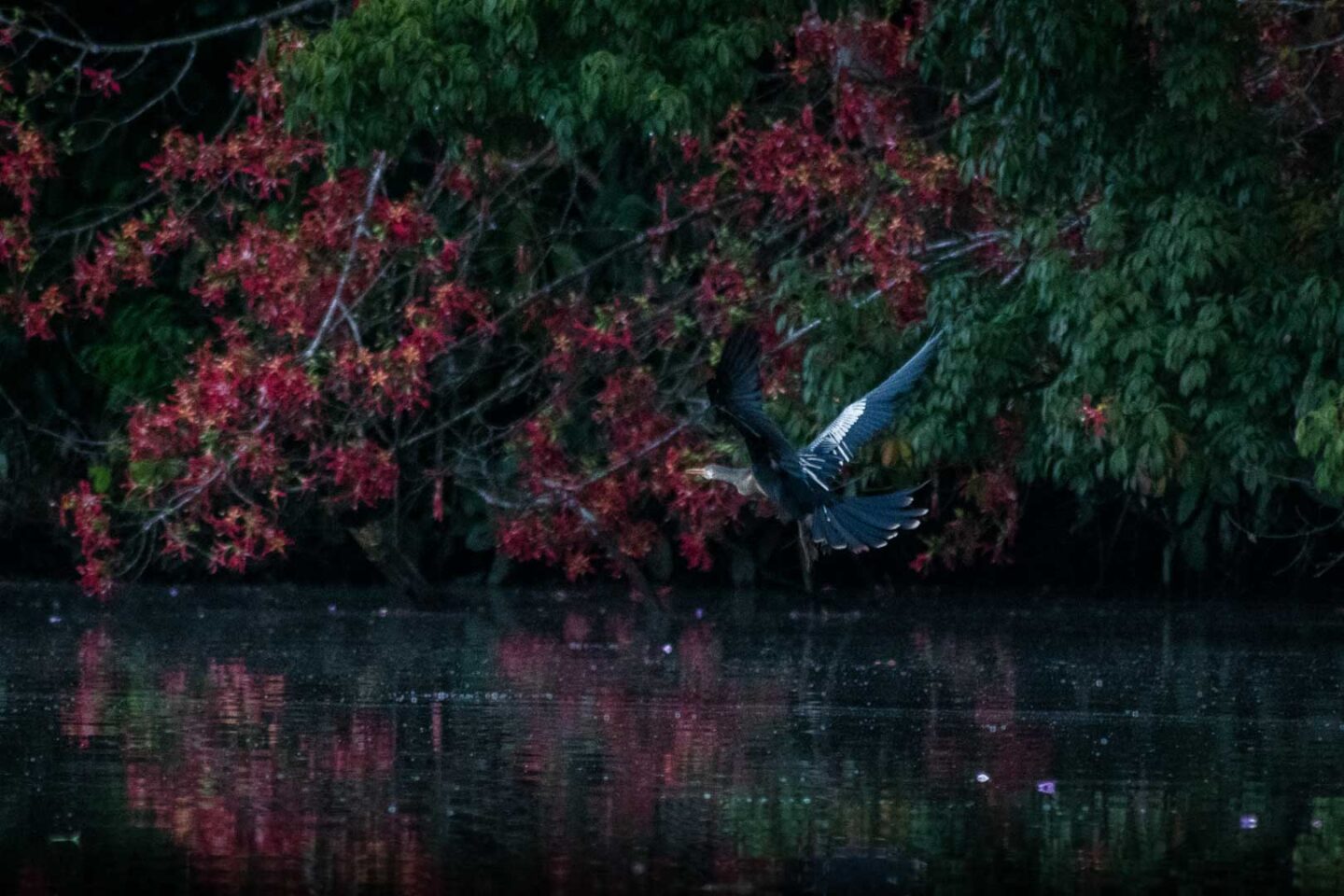
To make the most of your 2-week Peru itinerary, we’d recommend taking a few domestic flights throughout the country. Peru is one of the largest countries in South America and sometimes travelling on public transport just takes far too long!
You’ll likely fly into the capital of Lima when you start your trip. Although we headed to Paracas on the bus as we had enough time, some people may prefer to travel straight to Cusco. A flight between the two takes around 1.5 hours, whereas a bus journey will take you at least 21 hours!
Booking flights in Peru is very easy, and we’d suggest using Skyscanner for the best prices. Flights around the country tend to be very affordable. However, you will need to account for luggage costs.
We took two domestic flights in Peru (Lima – Cusco and Puerto Maldonado – Lima), and this saved us at least two days of travel.
Other Ways To Get Around Peru Include:
- Take the bus – You’ll find plenty of public buses in Peru and these are very affordable. For longer journeys, opt for an overnight journey as this will save you money on accommodation.
- Catch a train – There aren’t a lot of train routes in Peru, but the main one that serves Aguas Calientes (Machu Picchu) from Cusco is very popular. Inca Rail and Peru Rail both service this route.
- Colectivos – Privately owned minibuses operate throughout the country. Although often chaotic and at times unpredictable, they are very affordable and fun, as you’ll get a unique perspective into local life.
- Taxis – In the major cities such as Lima and Cusco you can use Uber, so getting a taxi is easy. If you opt for a private taxi, make sure you use an official company and organise the fare in advance.
- Private car – This is the most convenient way to get around the country, but also the most expensive. In all honesty, I wouldn’t recommend this option unless you’re after a really luxurious trip.
When it comes to public transport, we typically use Bus Bud (which we used while in Peru). This platform is very easy to use and you can find some fantastic deals.
Although we’d recommend using Bus Bud, you can book your transport through tour agencies or your accommodation. Just make sure you book the larger journeys in advance.
When is the best time to visit Peru?
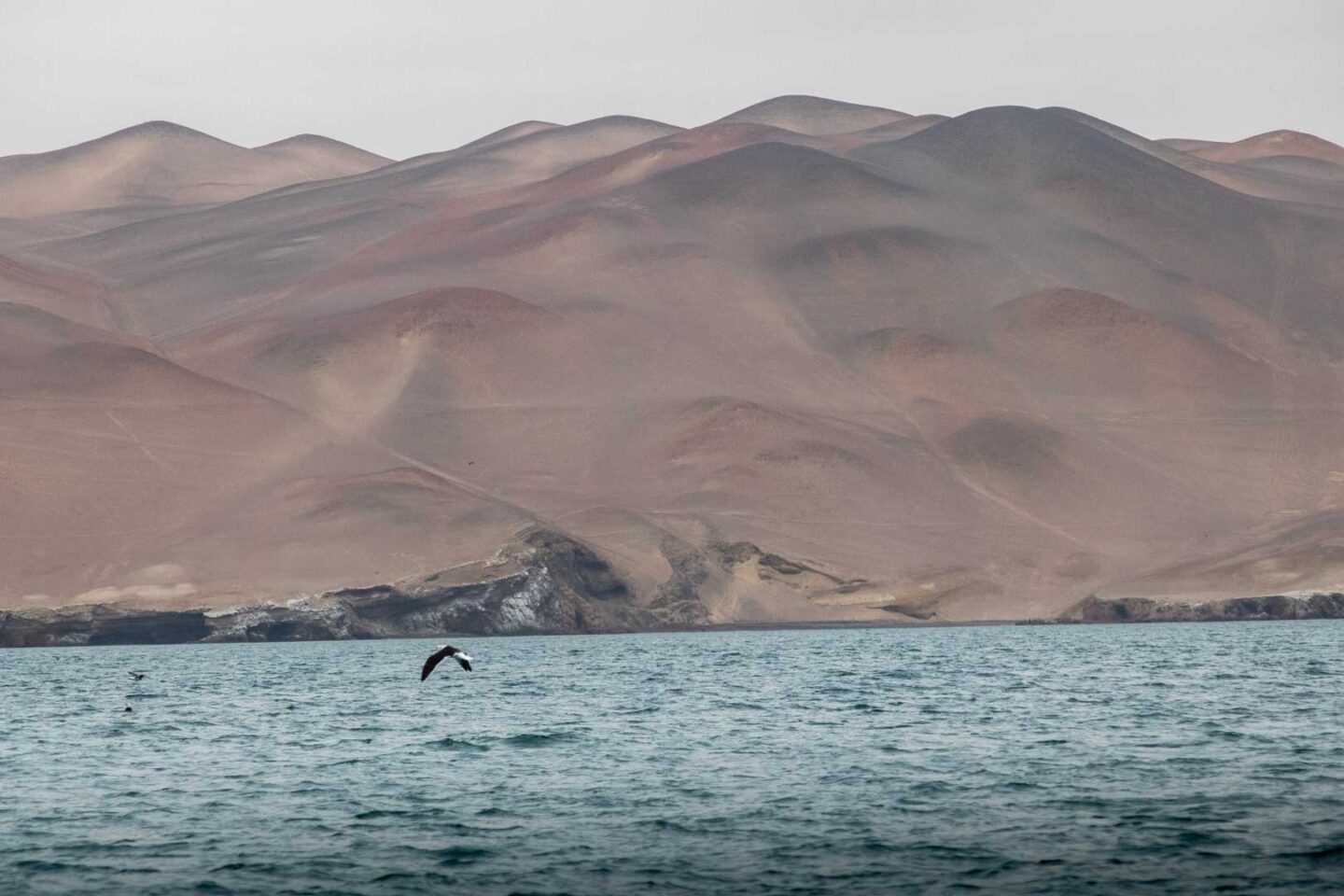
May to October is considered the best time to visit Peru as it’s the country’s dry season. Although the climate will differ depending on where you’re travelling to (e.g. the Amazon Rainforest or the Andes), typically, you can expect dry, sunny, and clear weather.
In the dry season, temperatures will differ depending on the altitude and location. However, in some areas, you can expect temperatures of up to 32°C (90°F) or higher, with plenty of humidity.
June to August is the peak season for visiting Peru, and you can expect crowds at this time. If you’d prefer a quieter experience, then visit outside of these months (September to November tends to be the quietest). For those who’d prefer to relax on the beaches, head to Peru between December and February.
We visited Peru from the end of May to mid-June and had the most fabulous time!
Frequently asked questions about Peru

Is 2 weeks enough for Peru?
We spent just over 2 weeks in Peru and had the most incredible time. We were able to explore the Amazon rainforest, visit Machu Picchu, and explore the bustling cities of Lima and Cusco (and more).
However, we do love to action-pack our itinerary, so three weeks may be more suitable for those who prefer to relax along the way! You’ll also be able to spend longer in destinations.
What is a good budget for Peru?
We recommend a budget of at least £35 to £40 per person for Peru. You could get by on less than this, but you’ll likely miss out on some great experiences and activities.
If you’re travelling as a couple or group, then you’ll be able to share accommodation costs. For those travelling solo, we’d suggest staying in a hostel to keep costs low.
Is Peru cheap or expensive?
Peru is one of the most affordable destinations in South America so you can get a lot for your money! We found everything here to be cheap, ranging from food to accommodation.
Of course, your Peru trip can also be very luxurious. There are plenty of grand hotels and fine-dining restaurants throughout the country, so you can make your stay as cheap or expensive as you’d like.
What is the best month to go to Machu Picchu?
April to October is considered the best time to visit Machu Picchu, with April, May, and early June being a great time to visit. During this time, you’ll encounter fewer crowds and hopefully, clear skies!
June to August is considered the peak season, as many people hike the Inca Trail during these months. However, we’d recommend visiting in the shoulder season so you can have a quieter experience.
Final Thoughts on this 2-week Peru itinerary
As you can see, this Peru backpacking itinerary is pretty action-packed. There are so many amazing places to visit, so putting together a trip can sometimes feel overwhelming!
Whether you’re looking to visit the iconic Machu Picchu or explore the Amazon Rainforest, there’s something for everyone in this amazing country. Hopefully, this guide has given you a good idea of what’s on offer. To make the most of your trip to Peru, don’t rush your time here.
If you have further questions about this 2-week Peru itinerary then don’t hesitate to contact us via Instagram, Facebook, or in the comments below!
PIN IT FOR LATER!
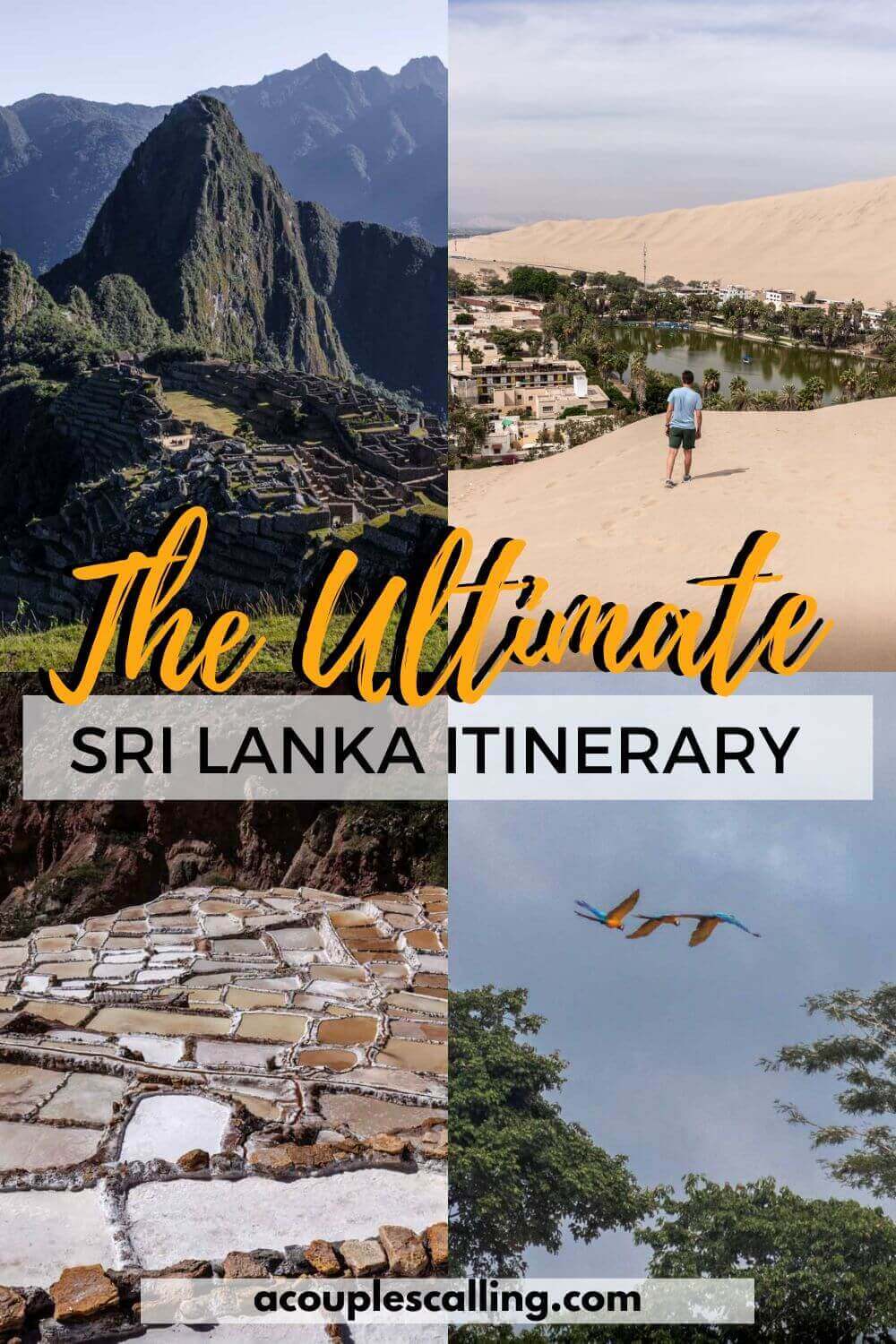
I breathe all things travel and nature, with my favourite place being the great outdoors! After exploring 3 continents, I’ve discovered my passion for travelling on a budget, and I want to help you all do the same. I honestly believe travel broadens the mind which is why I want to share all of our adventures!



